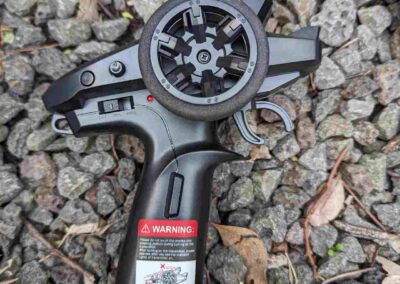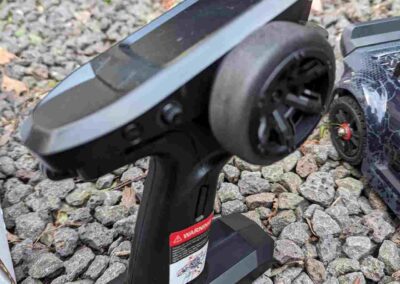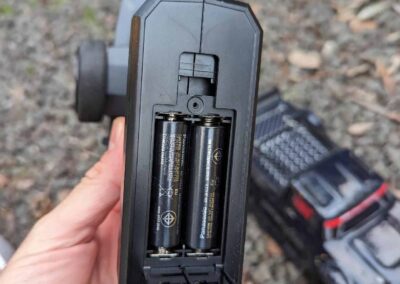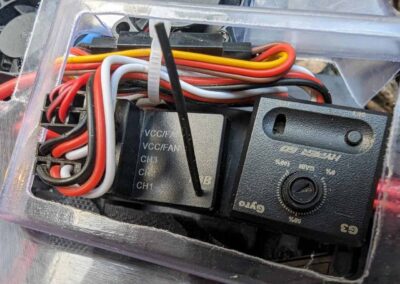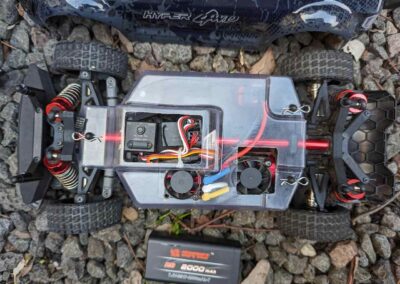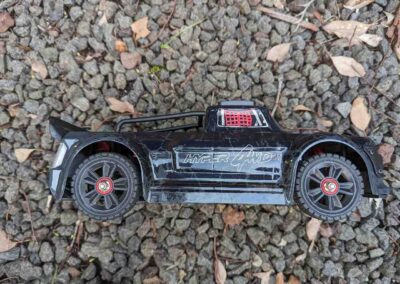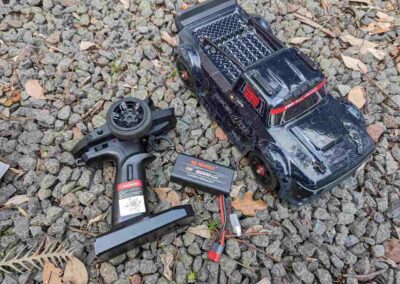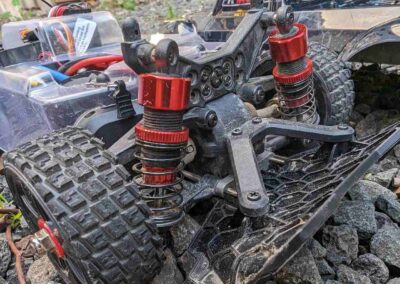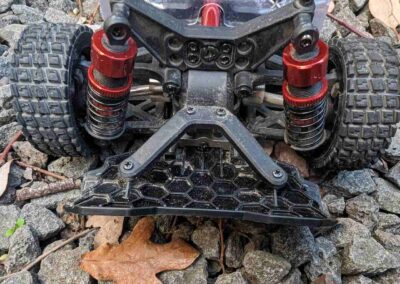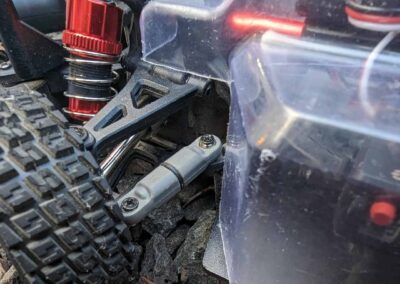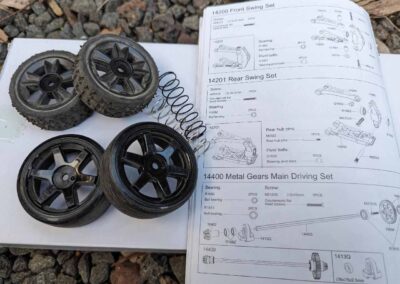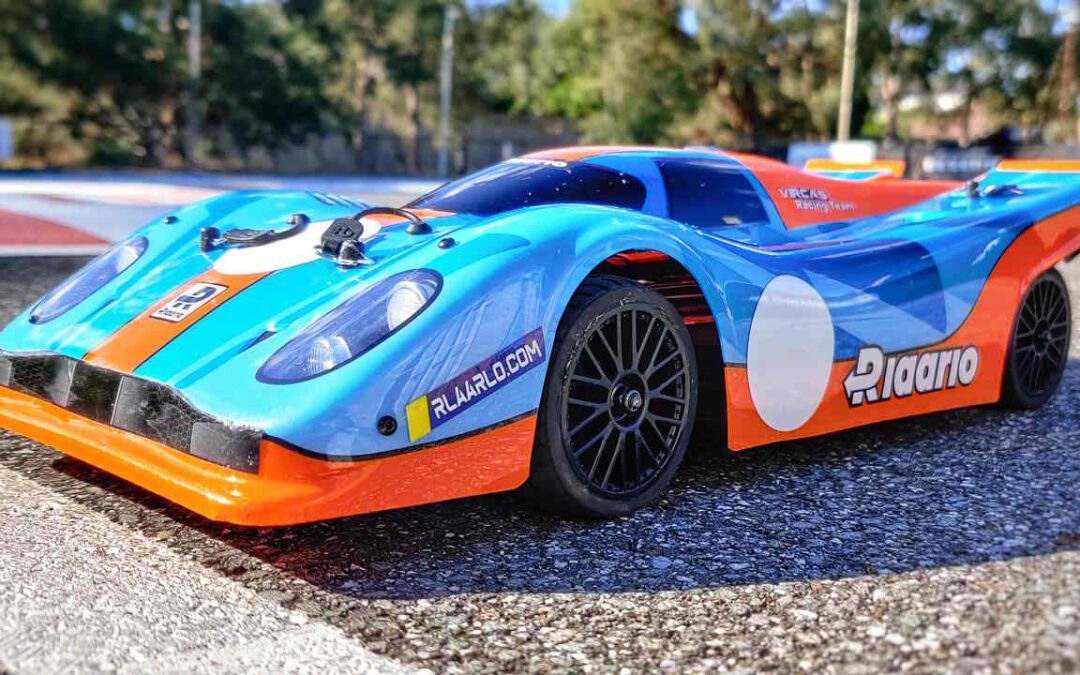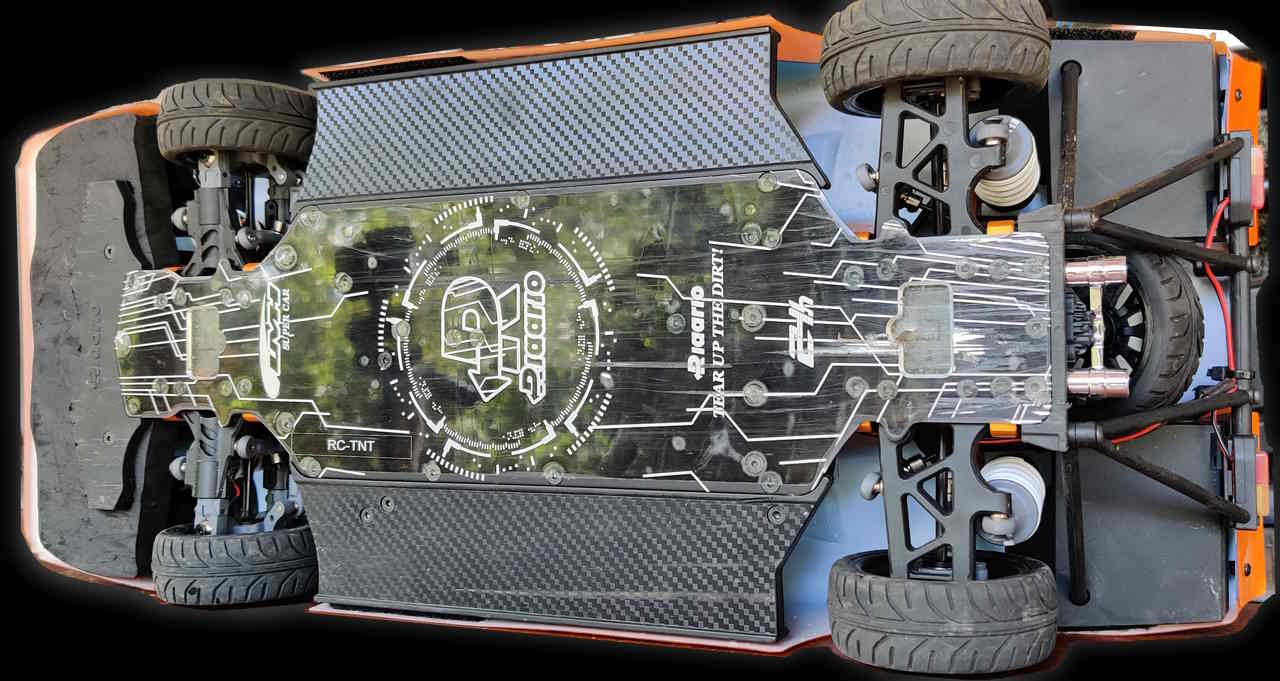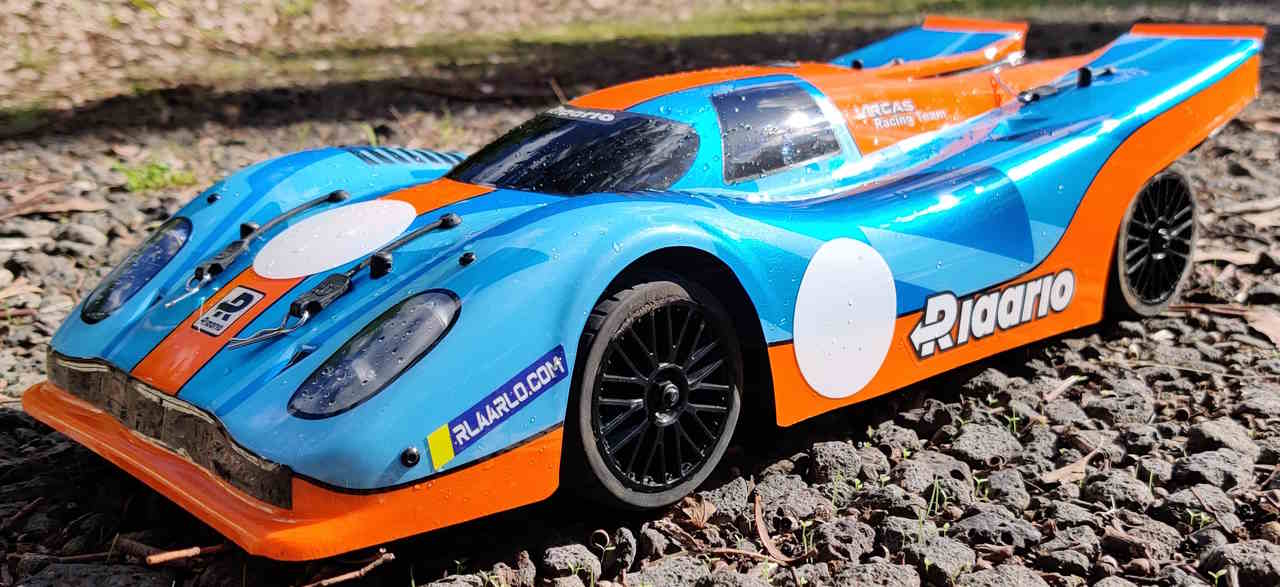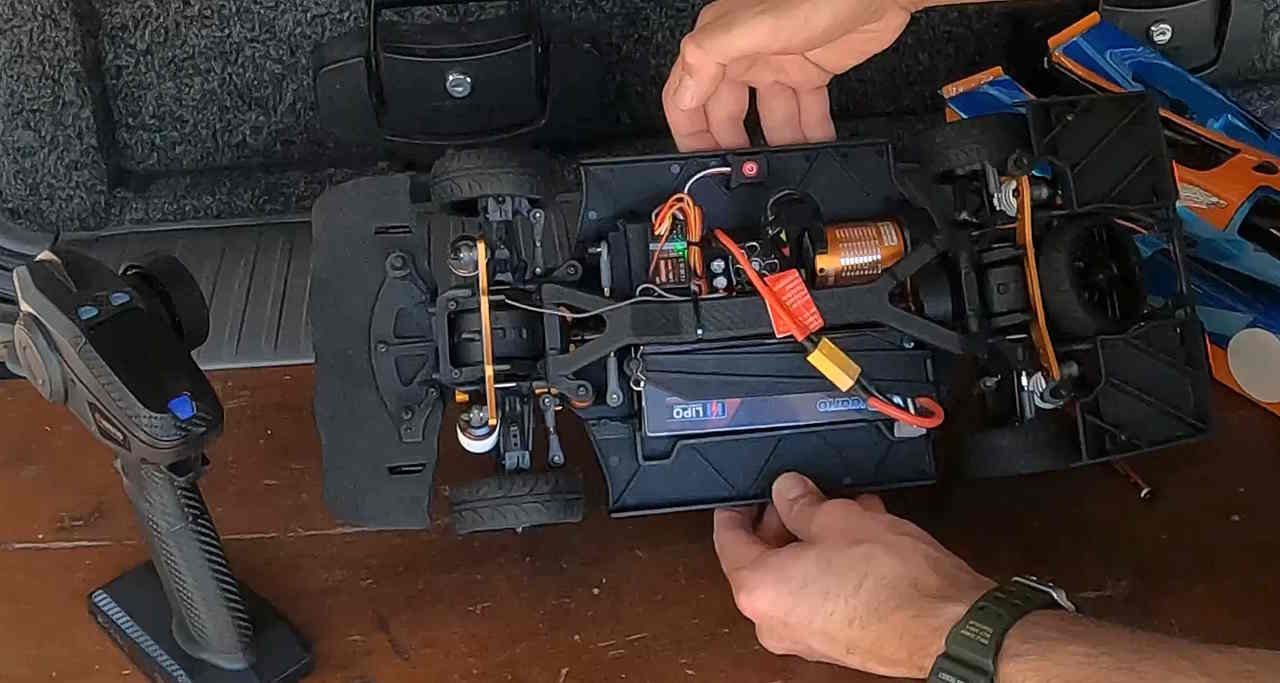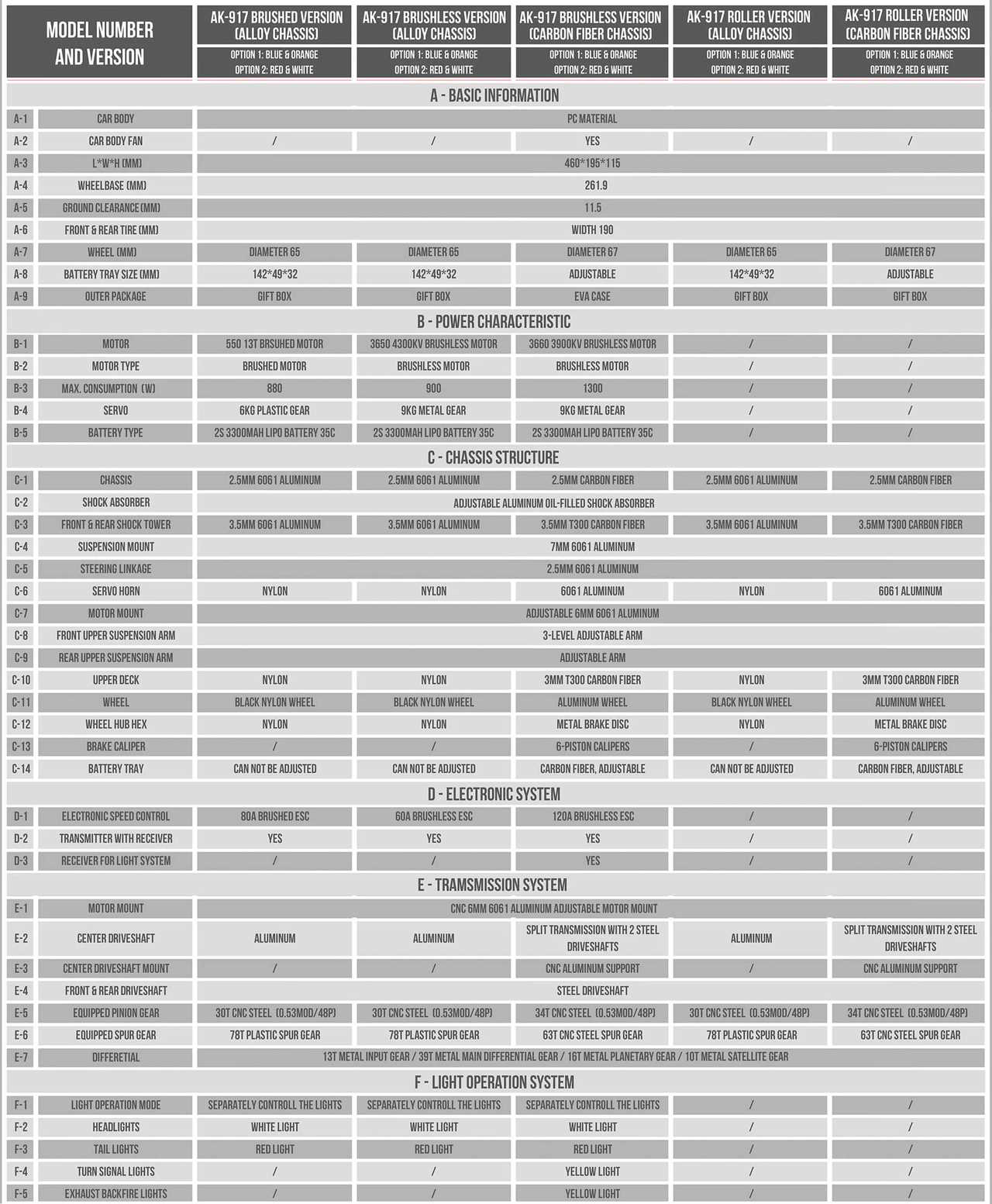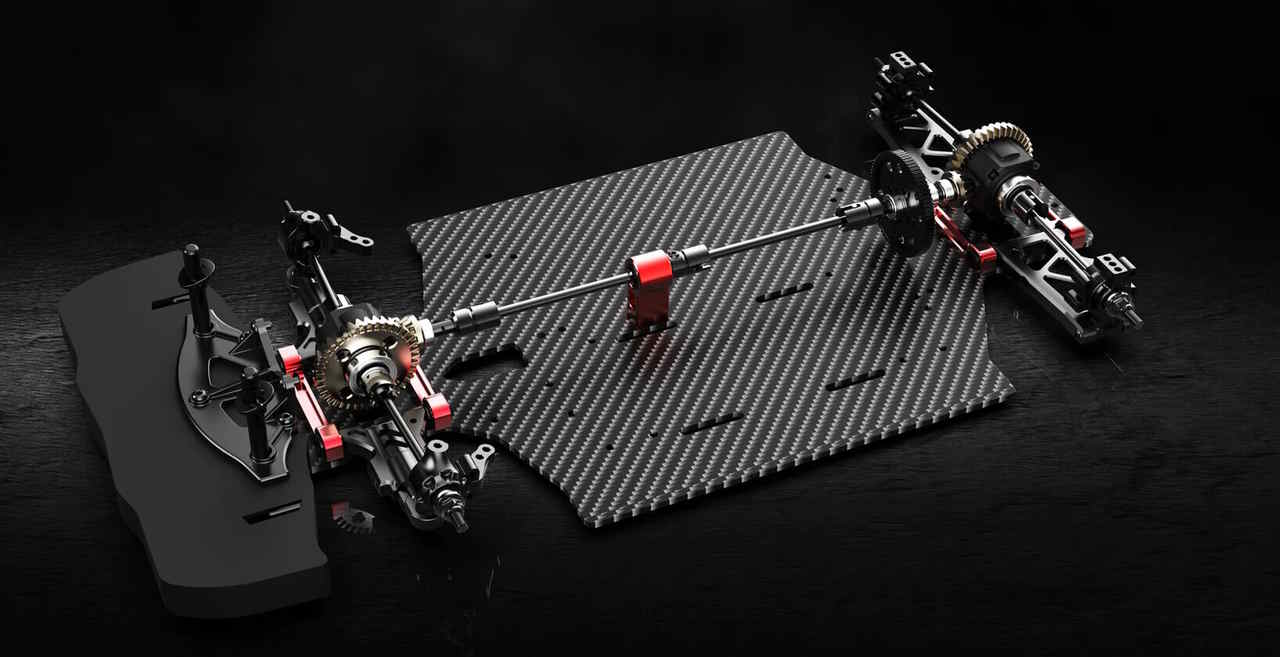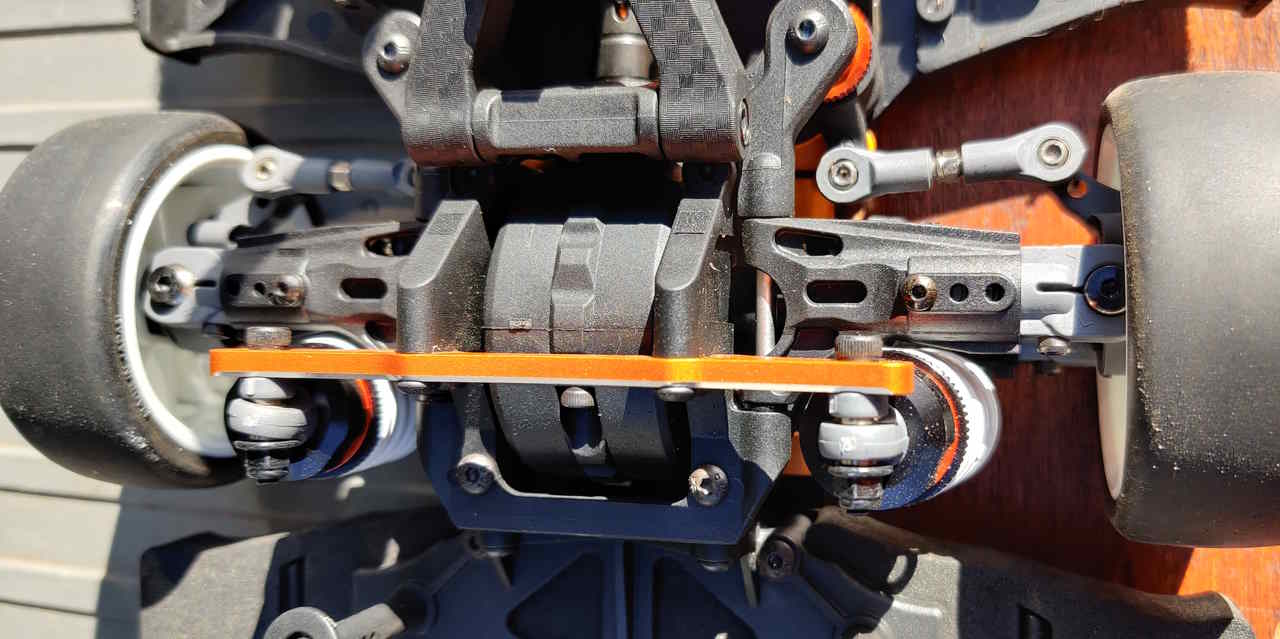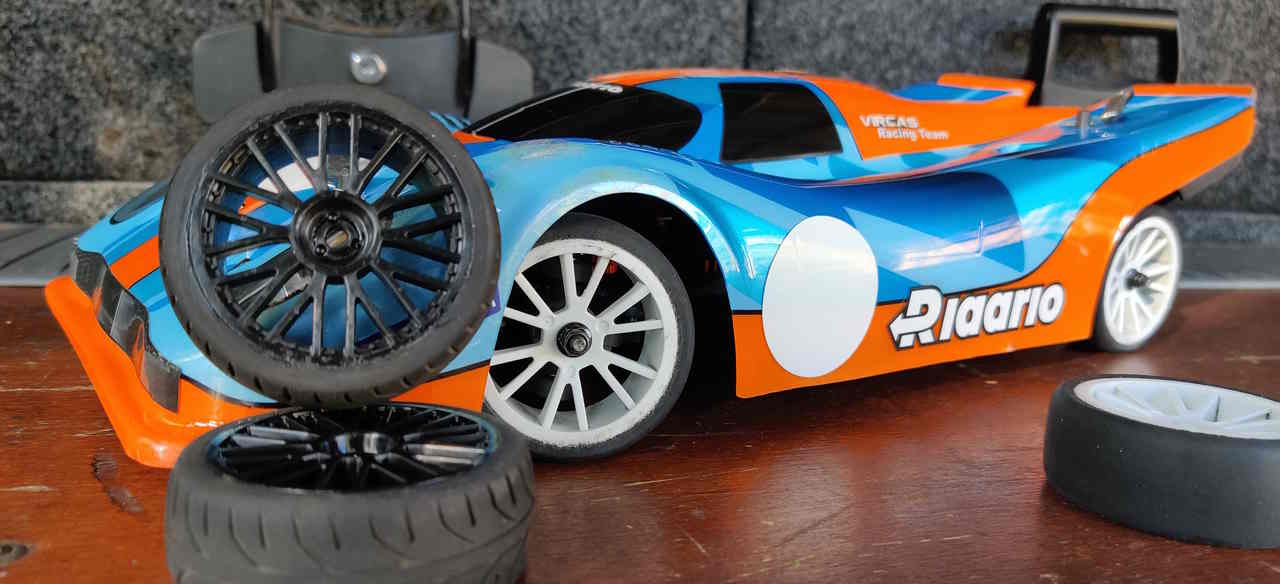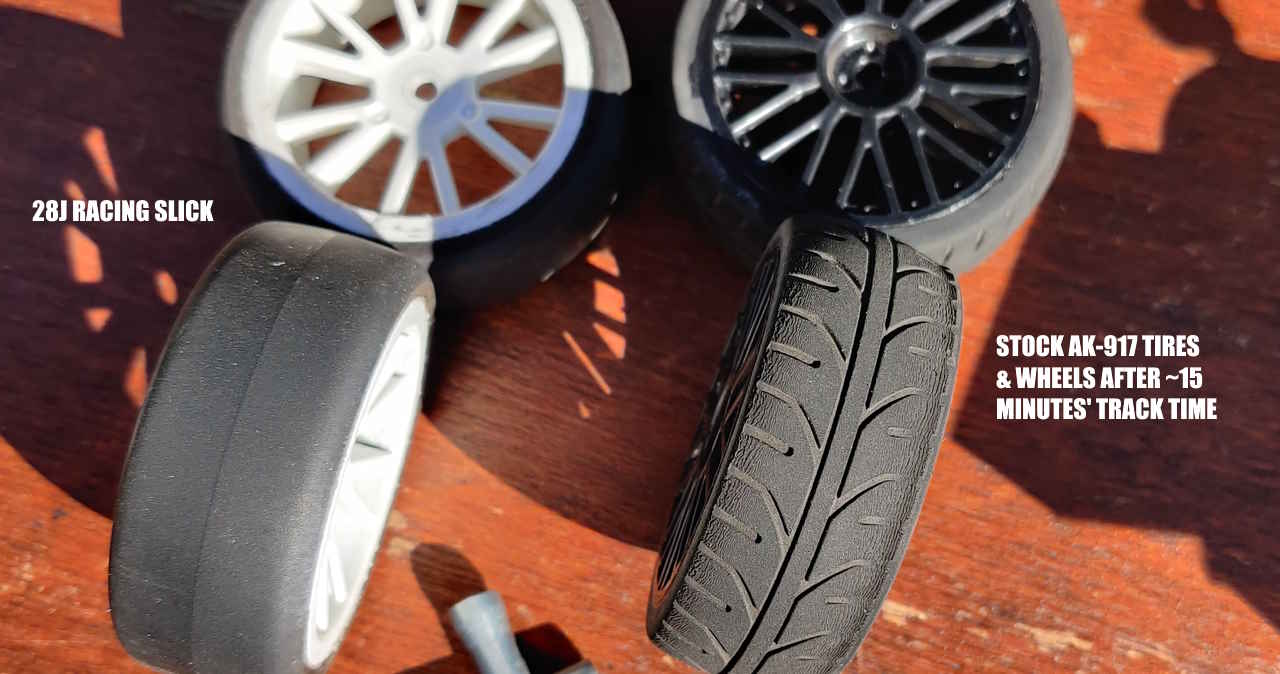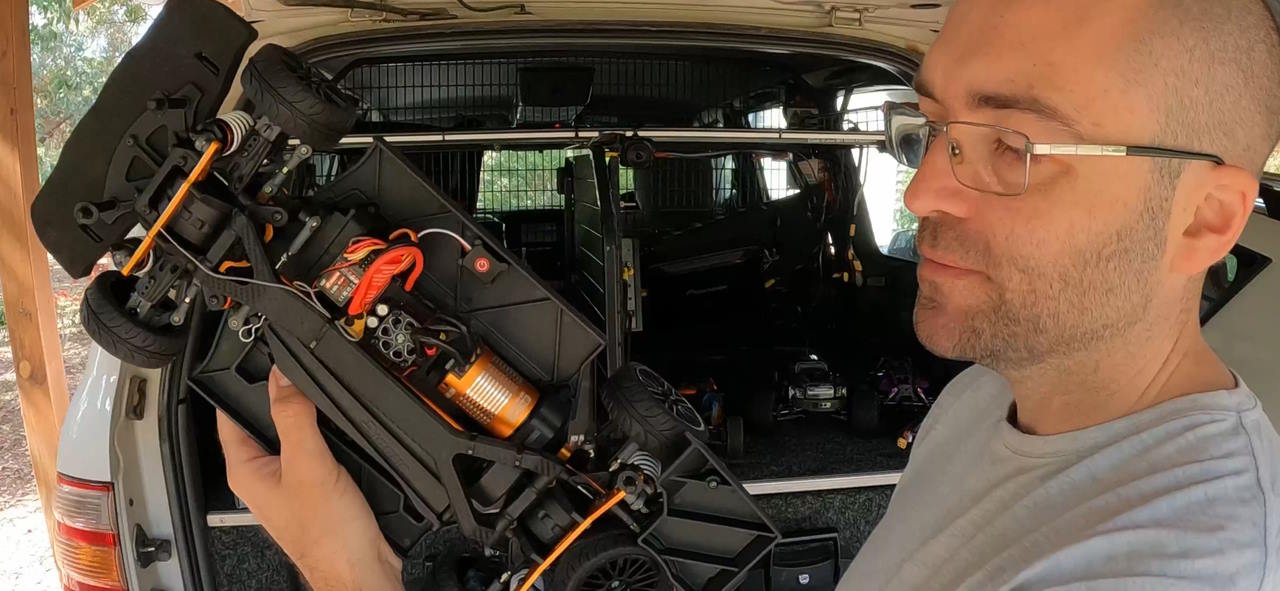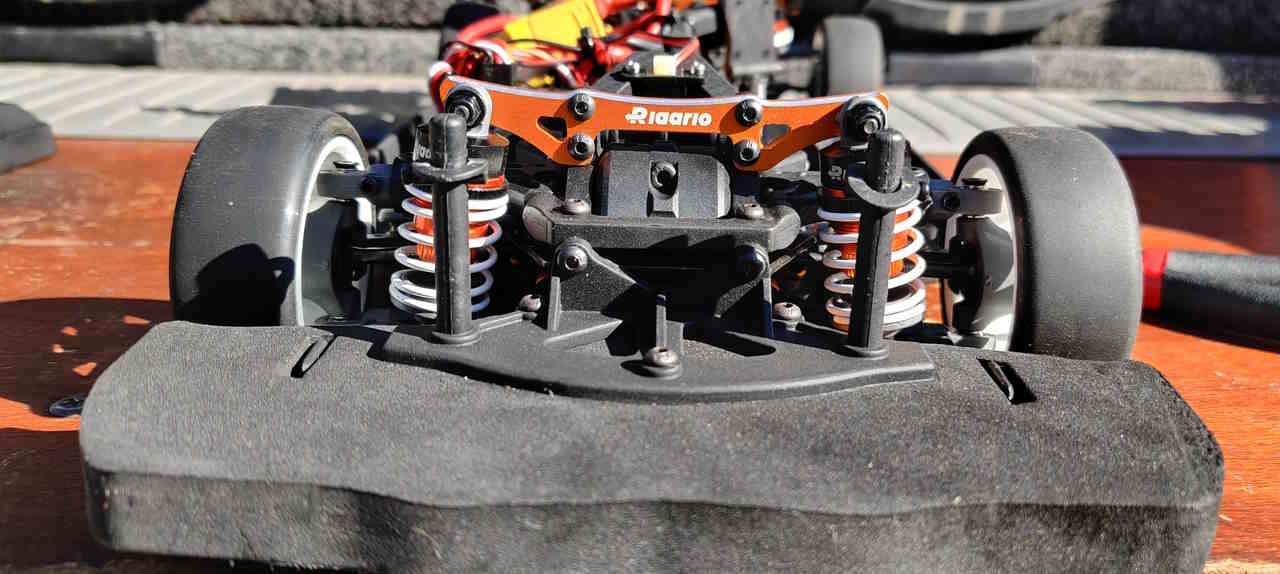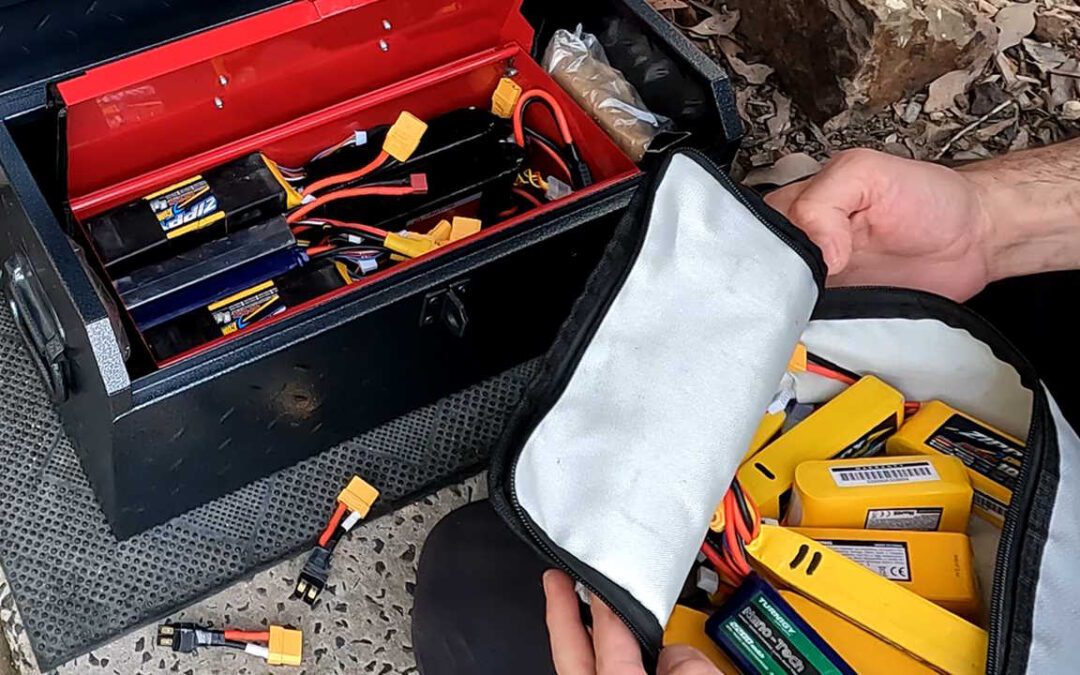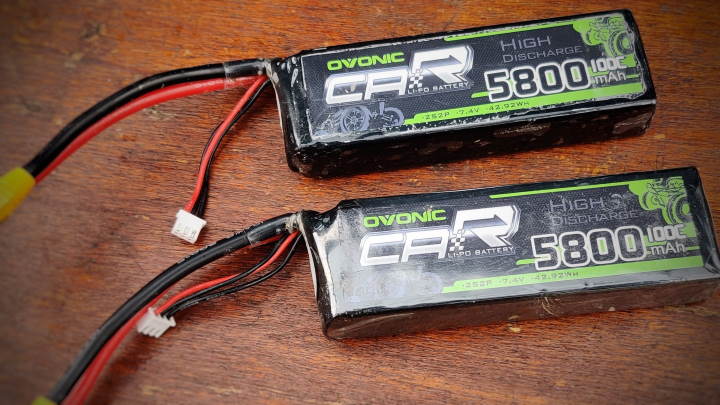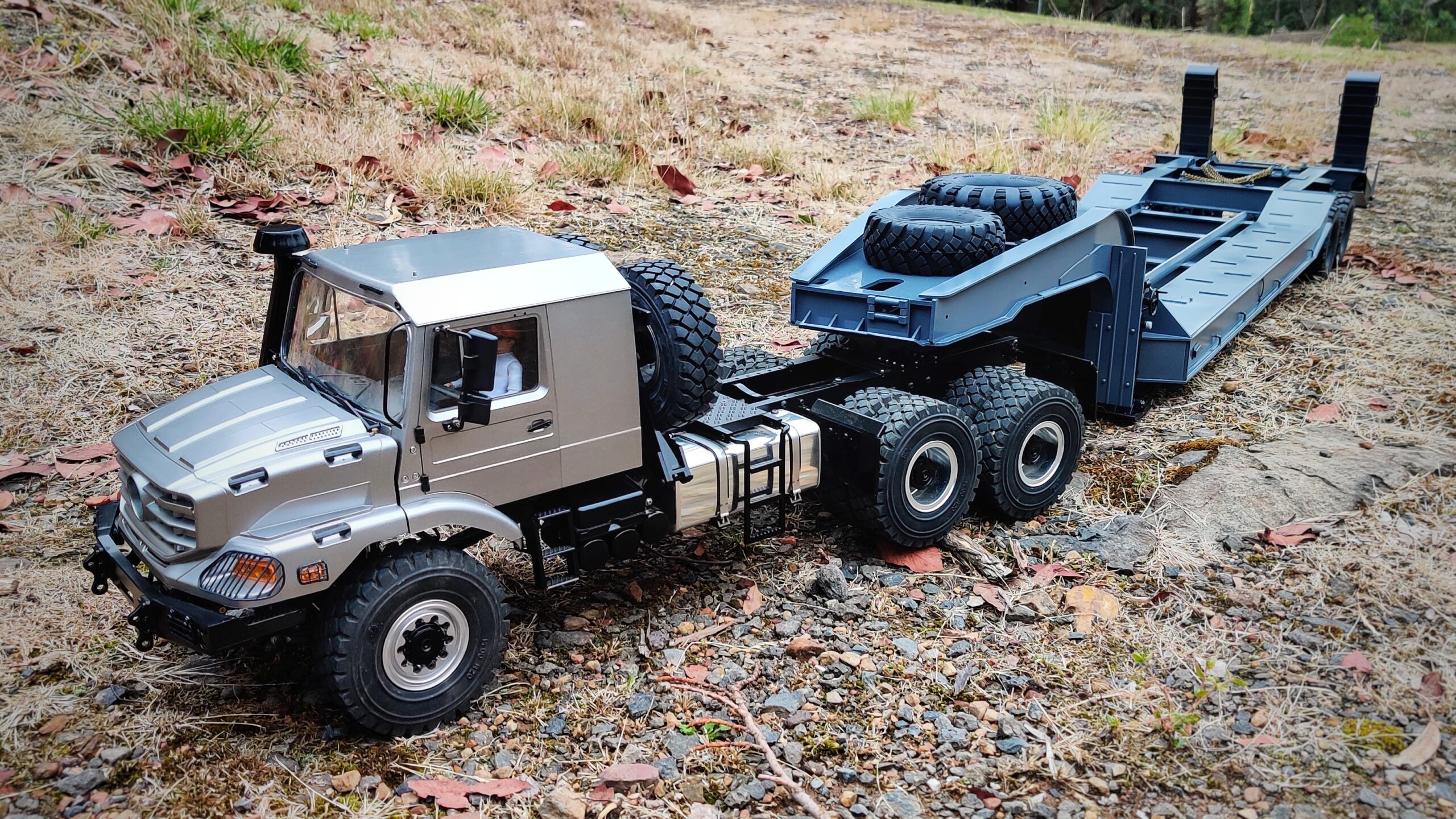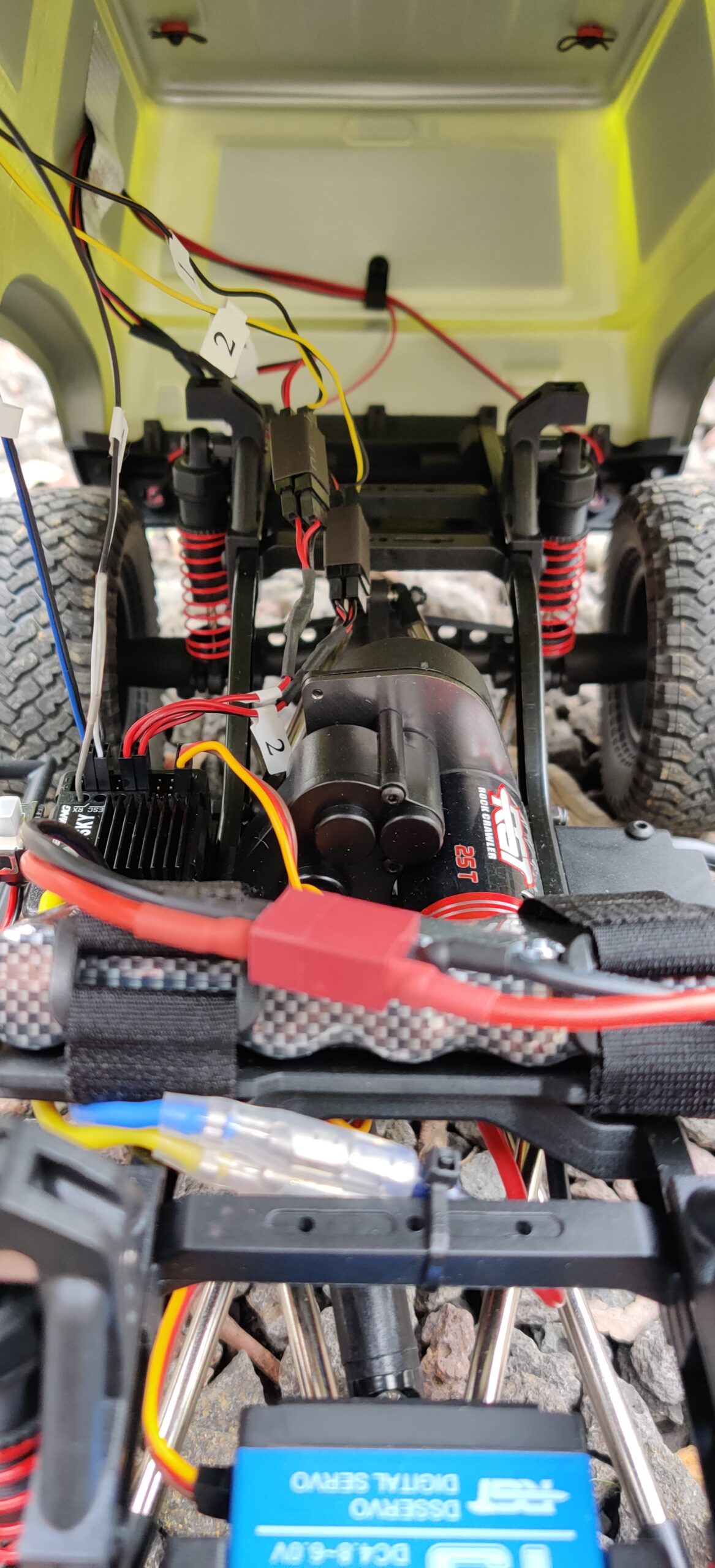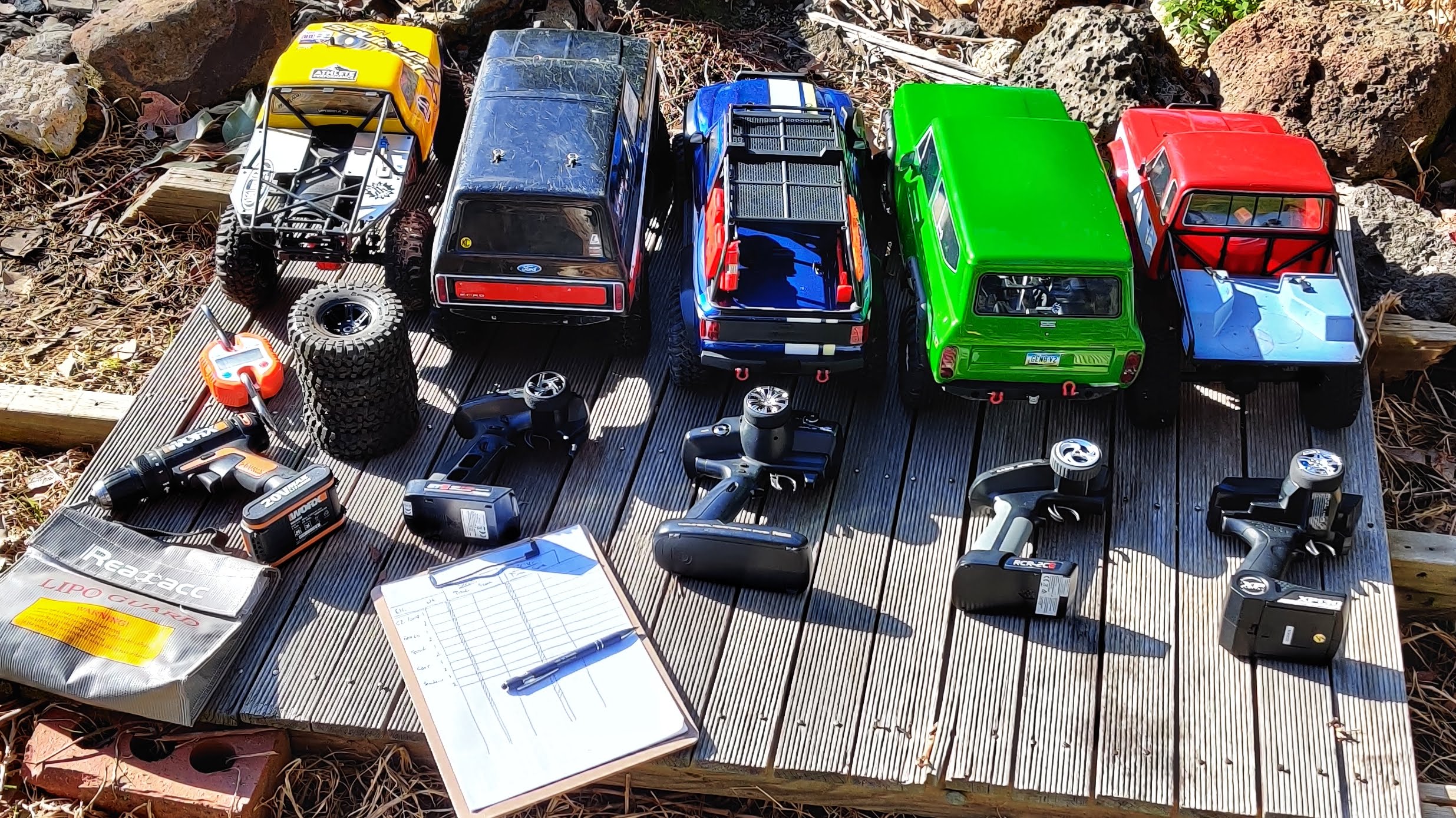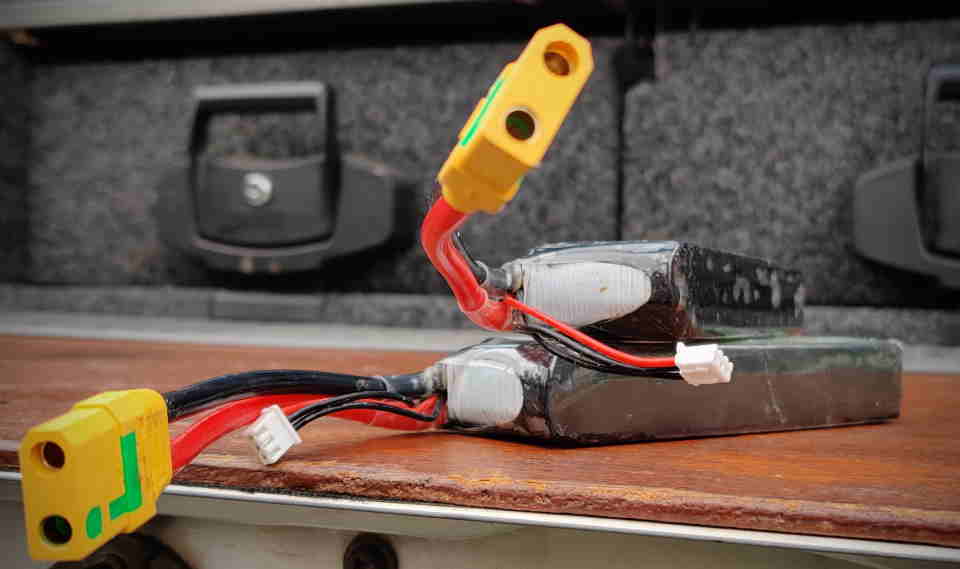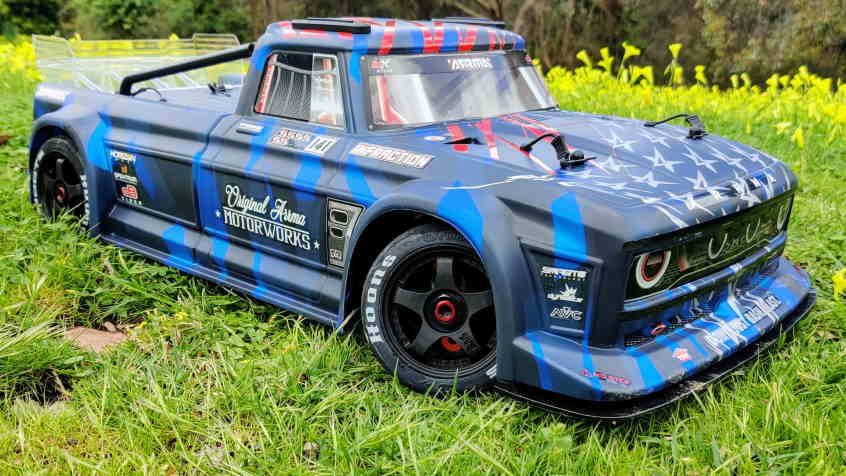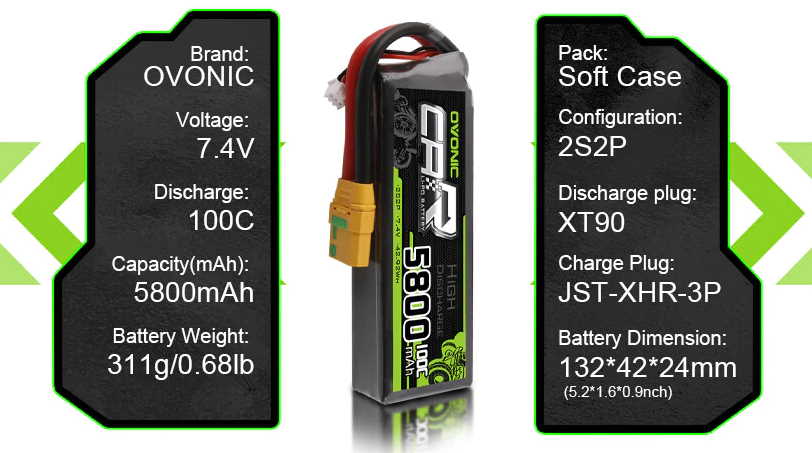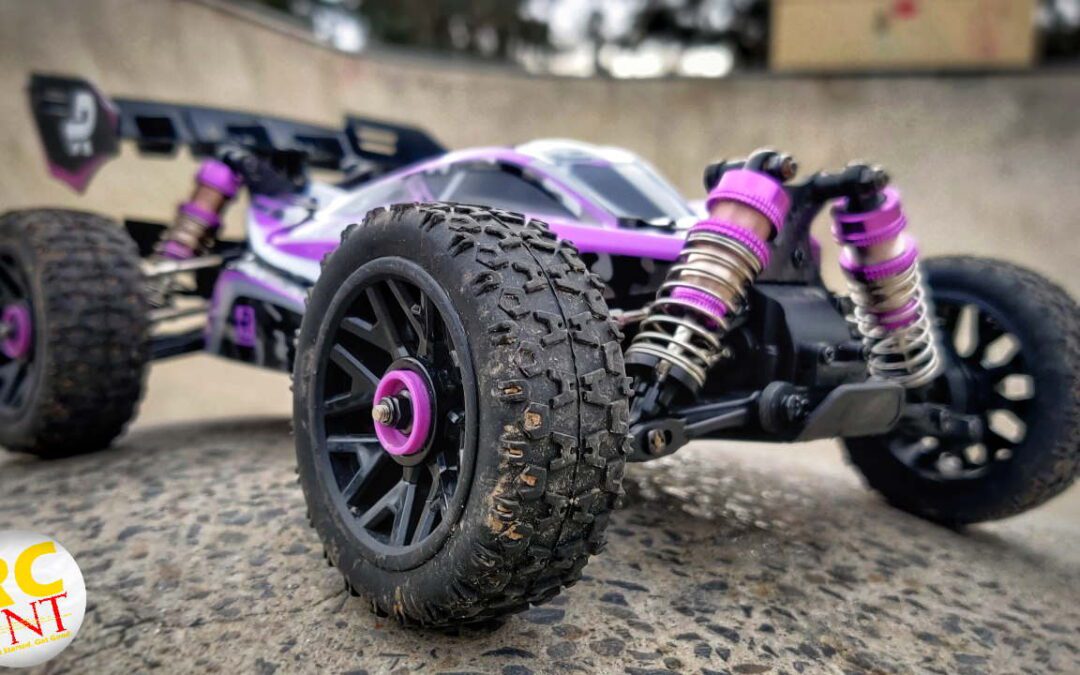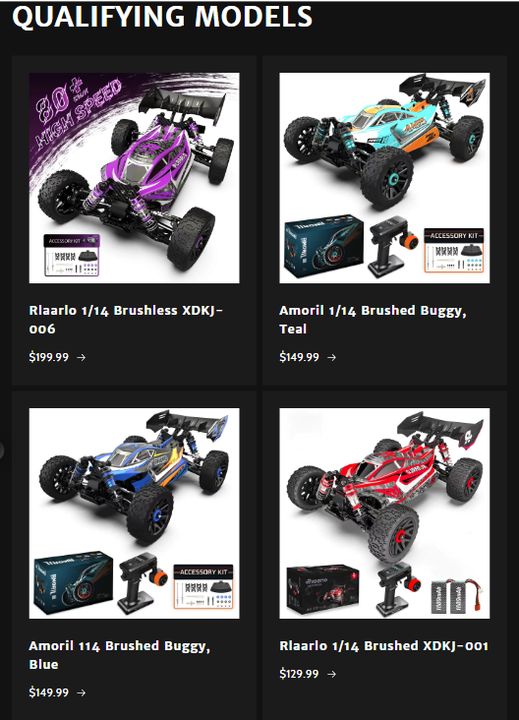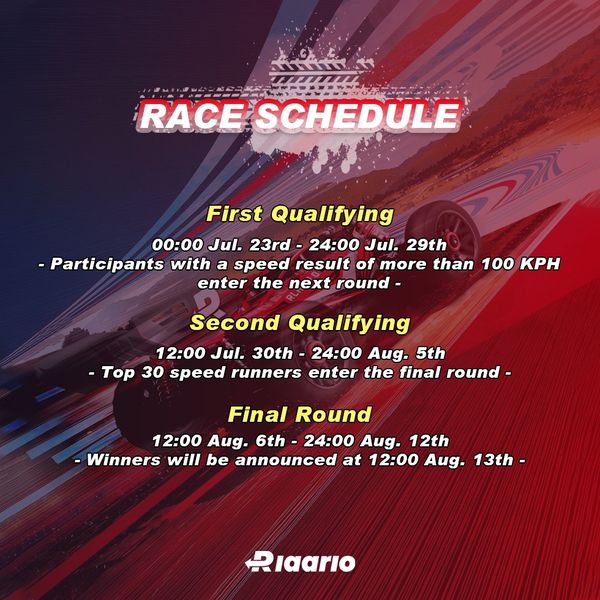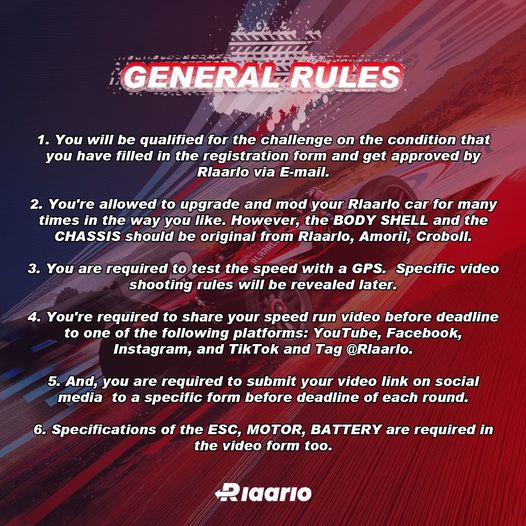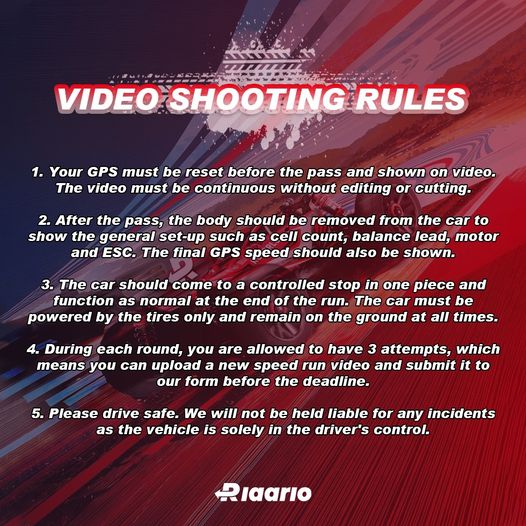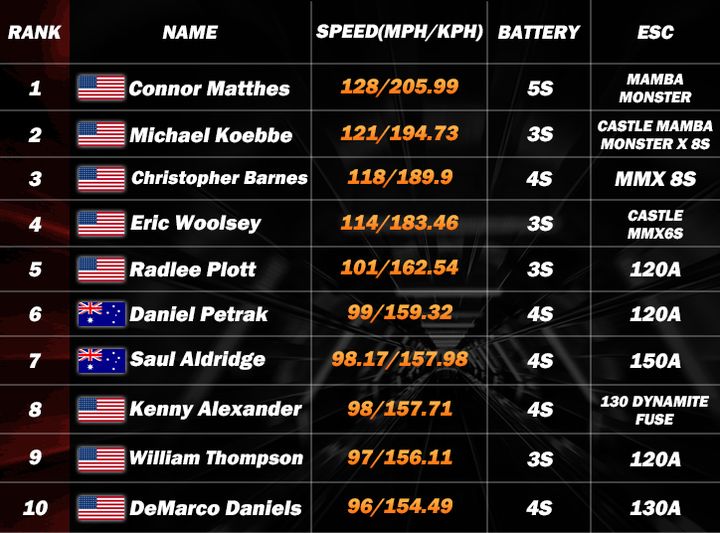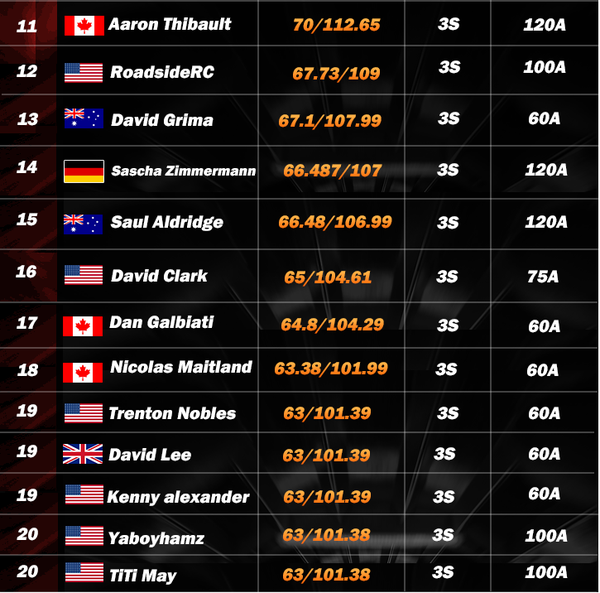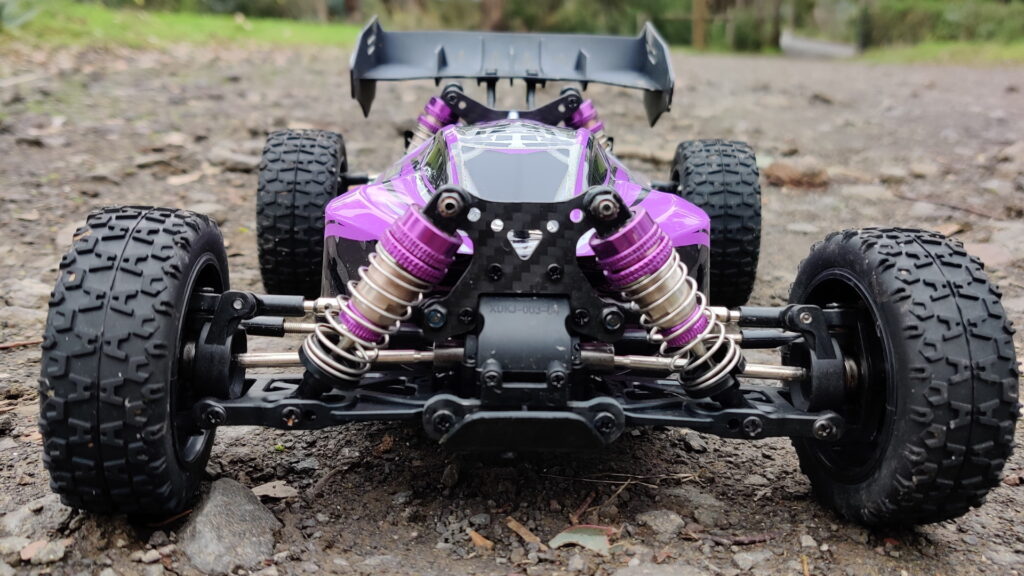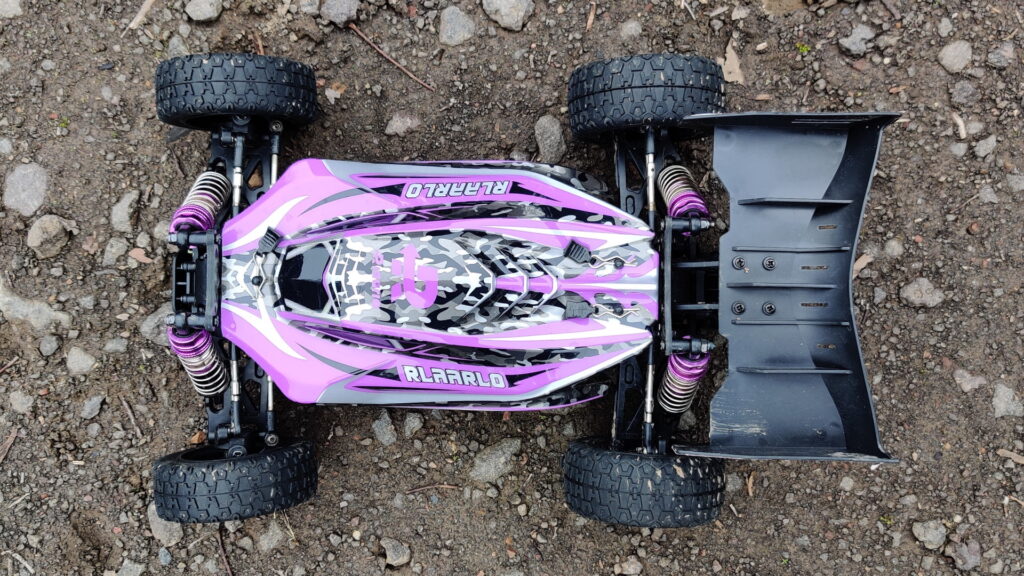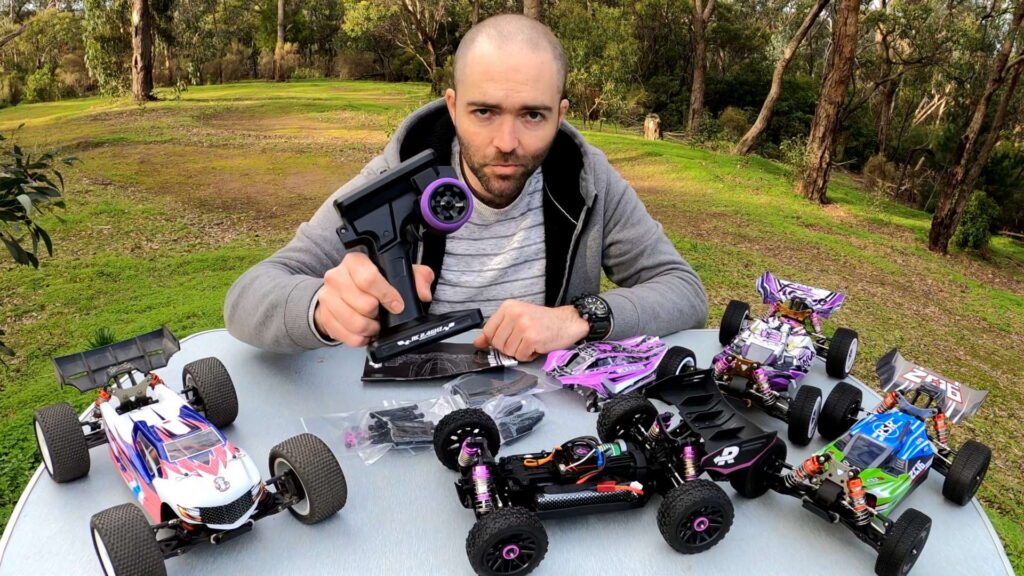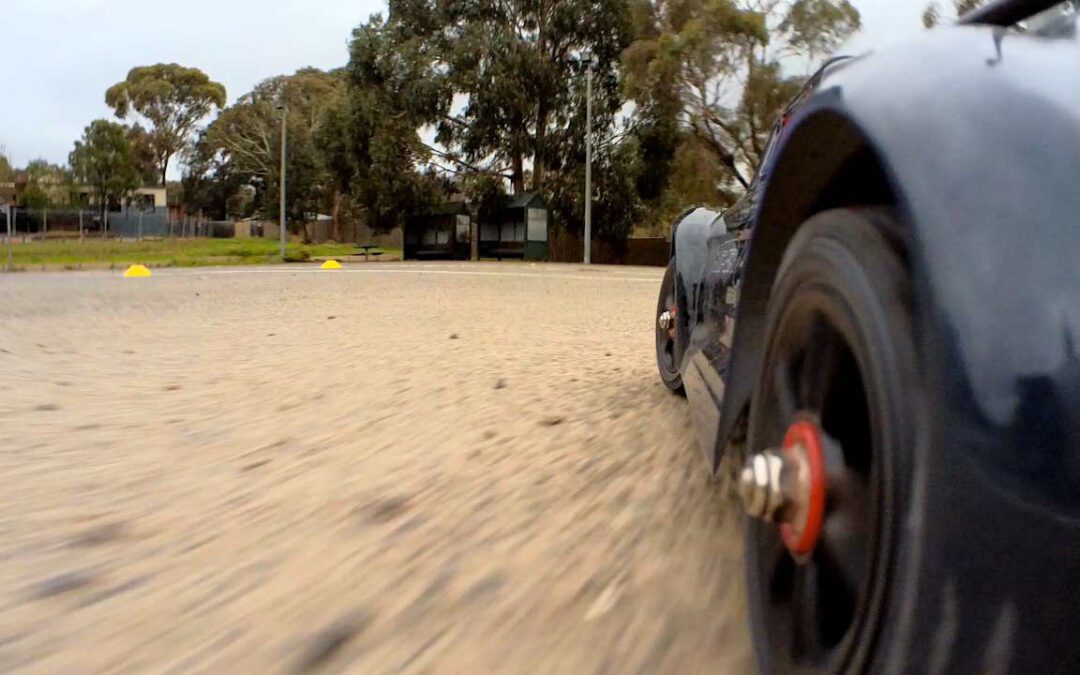
MJX RC Hyper Go: Pocket Rocket!
Big Speed, Tiny Package
Meet the MJX RC Hyper Go 1/14 Brushless RC Car, a compact yet hefty RC car that packs a surprising amount of discrete tech into a small package. No all-in-one modules here, this is a true hobby-grade vehicle. I’ll try to give you an understanding of the car’s features, performance, and value for money. On paper, it’s impressive. Let’s see if that apparent value is all it appears!
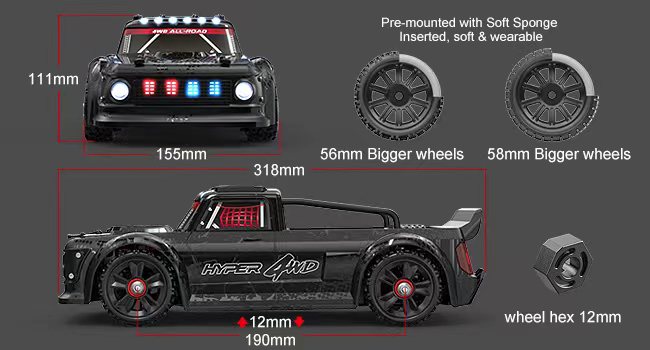
MJX Hyper Go Unboxing
The MJX RC Hyper Go comes in a well-packed box that includes the car itself, a set of off-road tires, a set of drift tires, a 1.5A USB charger, some spare body pins, and a set of stiffer springs. There’s a manual with exploded-parts diagrams, too.
Depending on the configuration you buy, there may also be one or two LiIon 2S 2000mAh batteries included, too. (More on batteries below, but it takes 2S and 3S and there’s a standard Dean’s / T-connector on the ESC). It’s a solid package of goodies!
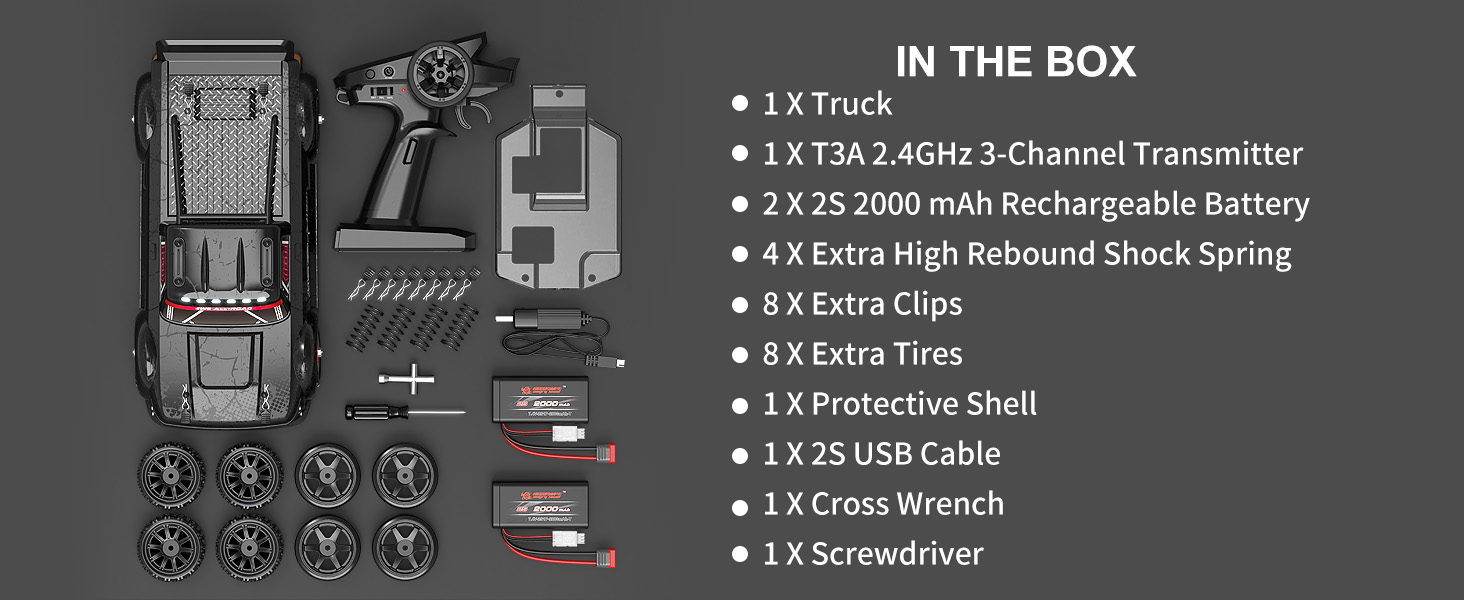
Radio Transmitter
The radio that comes with the MJX Hyper Go is identical to the one provided with the Bezgar HP 161 (review coming soon). It features a Function button that controls the car’s lights, cycling through three different modes including off. The functions are all on with flashing red and blues in the grill and red brake/reverse lights; and all flashing up front and solid plus braking in rear. I didn’t like the red and blue flashing lights in the grill at first, but after driving it around a bit, I found it growing on me – and that’s saying something, if you know my usual reserved tastes on ‘loud’ things!
Note, the transmitter has a slight delay on the throttle inputs, which might take some getting used to. Once you’re driving, you don’t feel it, but from stopped, there’s a few hundred millisecond delay before you get a response. Thankfully, the components are all discrete (or standalone), and are thus replaceable. Even a cheap upgrade like a DumboRC 4-channel system (such as this X4 system here) will solve this delay issue and also give you better radio range, both without losing the light control. A FlySky GT5 would also be worth considering – probably my favourite premium-budget radio system.
Chassis
The 6061 aluminum alloy chassis of the Hyper Go is robust and well-designed. I observed a lot of triangles in the frame supports for added strength. It’s attractive and quite rigid, but doesn’t feel fragile. There’s some weight to it!
There’s space for the separate receiver, a 2845 3700kv brushless motor, servo, and a 45 amp brushless ESC. The car also comes with a clear, polycarbonate cover that allows the car to breathe while keeping (most) debris out. It’s a good layout that leaves room for upgrades and still fits the shorter-style 2S and 3S batteries that are readily available. You might consider these.
Battery & Motor
The Hyper Go comes with a lithium-ion battery. It’s a 2x 18650 2000mAh 3.7v pack that delivers 7.4v and is probably 10-15C. This will serve, but LiPO batteries will be better. We tested with both a 2S and a 3S Angry Snail pack, which were supplied by the company for review, and while cheaper cells they were ample for this car. You can find both of those variants here, if you need a few.
The brushless motor is a peppy unit and is beautifully paired with this car’s size and weight. While the box says 3900kv, ours came with a 3700kv unit. This lower KV means better acceleration and is easier on the battery, at the cost of top speed. For a car this size, it’s a good trade-off and I’d think 3500kv to 3800kv would be about perfect. They’ve got it right for this one.
The car is 2s and 3s compatible, and it’s great to see fans on both the motor and the 45A ESC for ample cooling.
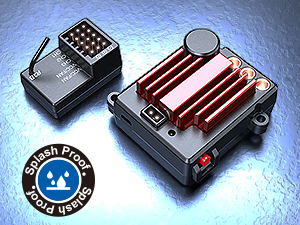
Drivetrain & Suspension
The drivetrain of the Hyper Go is simple but effective, with a motor, pinion and spur gear supported securely in bearings and mounts. There’s no slipper, no central diff, just an open diff at each end. It’s well suited to drift and bashing, though you might consider adding some stiff silicone oil or putty to the front diff for less understeer.
On asphalt, the car had a tendency to squat in the rear, lifting the inside front wheel on many corners and subsequently spinning out, despite the gyro being set to the recommended 75%. Out of the box, the suspension felt stiffer in the front than the rear, so I added gradual preload to the rear all the way up to 80% before giving up and fitting stiffer rear springs. Thankfully, those springs were included in the box with the car, so this helped – but did not completely fix – the squat and spin-out issue.
Sway bars would help here too, but I can’t see that they’re available for this model. You might have more luck – I searched MJX’s upgrades and spares page, but possibly sway bars have since been added. If you’re considering this car, assume you can’t get sway bars for now and set expectations accordingly.
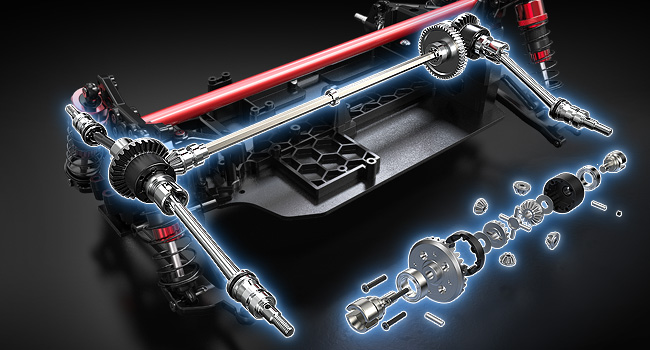
Suspension Tuning
The suspension of the Hyper Go can be tuned to your liking, within limits. Here’s what you can change:
- Springs, either soft or medium. Soft come mounted on the car, while medium firmness can be replaced on all corners in a few minutes with just a few screw turns.
- Preload adjustment for ride height, which I’d suggest loading in the rear and keeping unloaded up front. Test on your terrain and see how you go with it.
- Shock oil – less, more, thicker, thinner. It’s good out of the box, but you can slow them down or speed them up (slow in rear, faster in front, for example) if you wanted to fiddle some more with tuning.
- And lastly, toe on the front wheels – there’s minimal tuning with an internal grub screw in the turnbuckles. There’s 1.5 to 2mm toe you can vary, and they come fairly aggressively wide out of the box, which is good for rough terrain and drifting. Speed runners will want to true the toe to a parallel setting.
Body & Lighting
The body of the Hyper Go is attractive and well-constructed, with a lead strip on the back and focused headlights at the front. The car also features flashing police-style lights, which can be controlled via the Function button on the transmitter.
Light control module and wiring is tucked up inside the body with attractive covers and white tape. Our tape was peeling off a little, but pressing back down was enough to keep things in place. The lights are bright, attractive and add to the fun. I’m a fan.
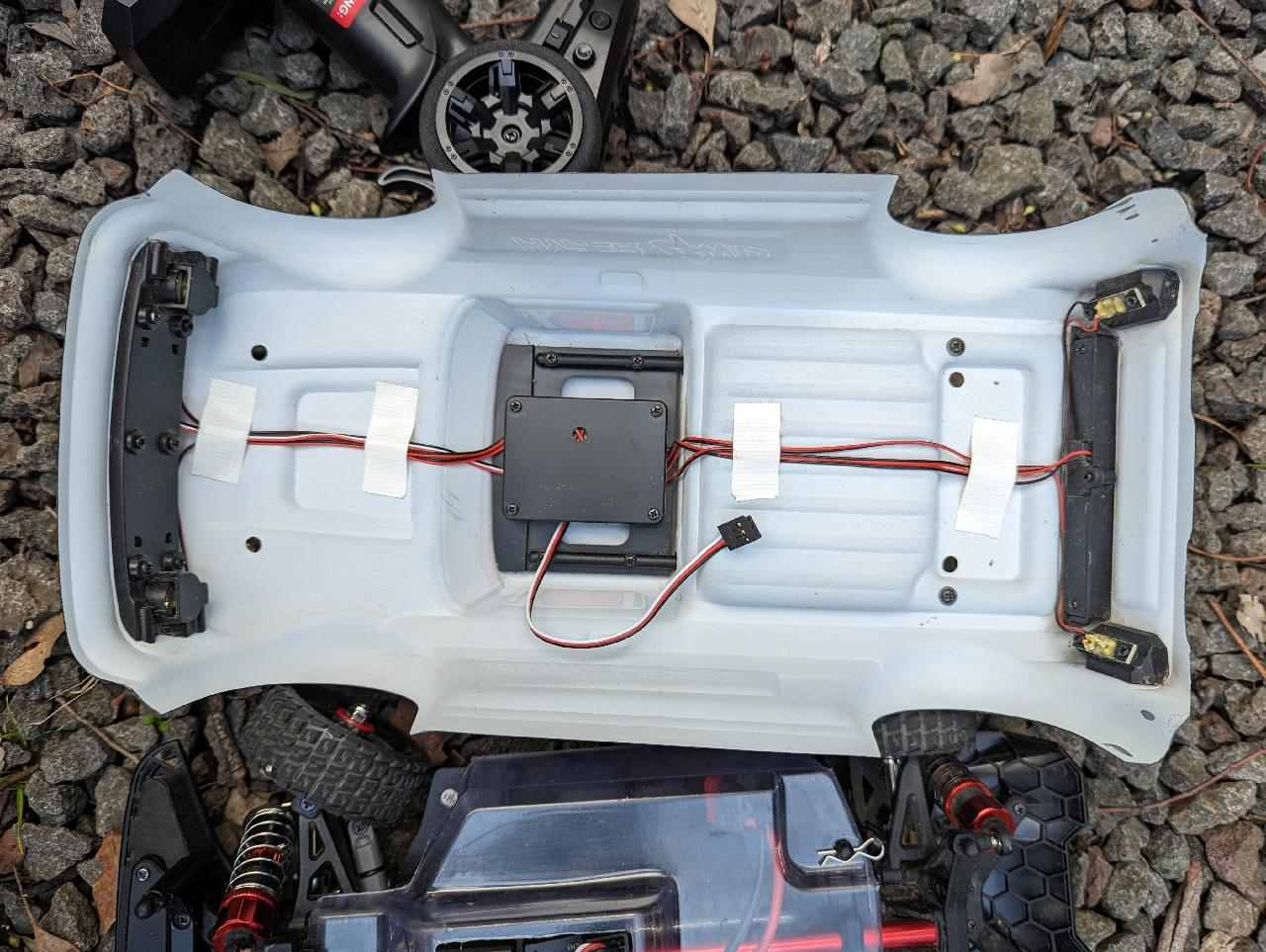
Speed & Range Test
The Hyper Go is a speedy little goer, reaching a top speed of 61 km/h on 3s. This gives a likely top speed on 2s of 40 to 45 km/h. The car’s gyro helps with stability, especially at higher speeds.
Be aware that the radio range topped out at about 50m, or about 164ft. Not huge, though thankfully the car is small too, so this won’t be a problem unless you’re trying to do a speed run. (You can see how this went in our testing in the video review, at the end of this article).
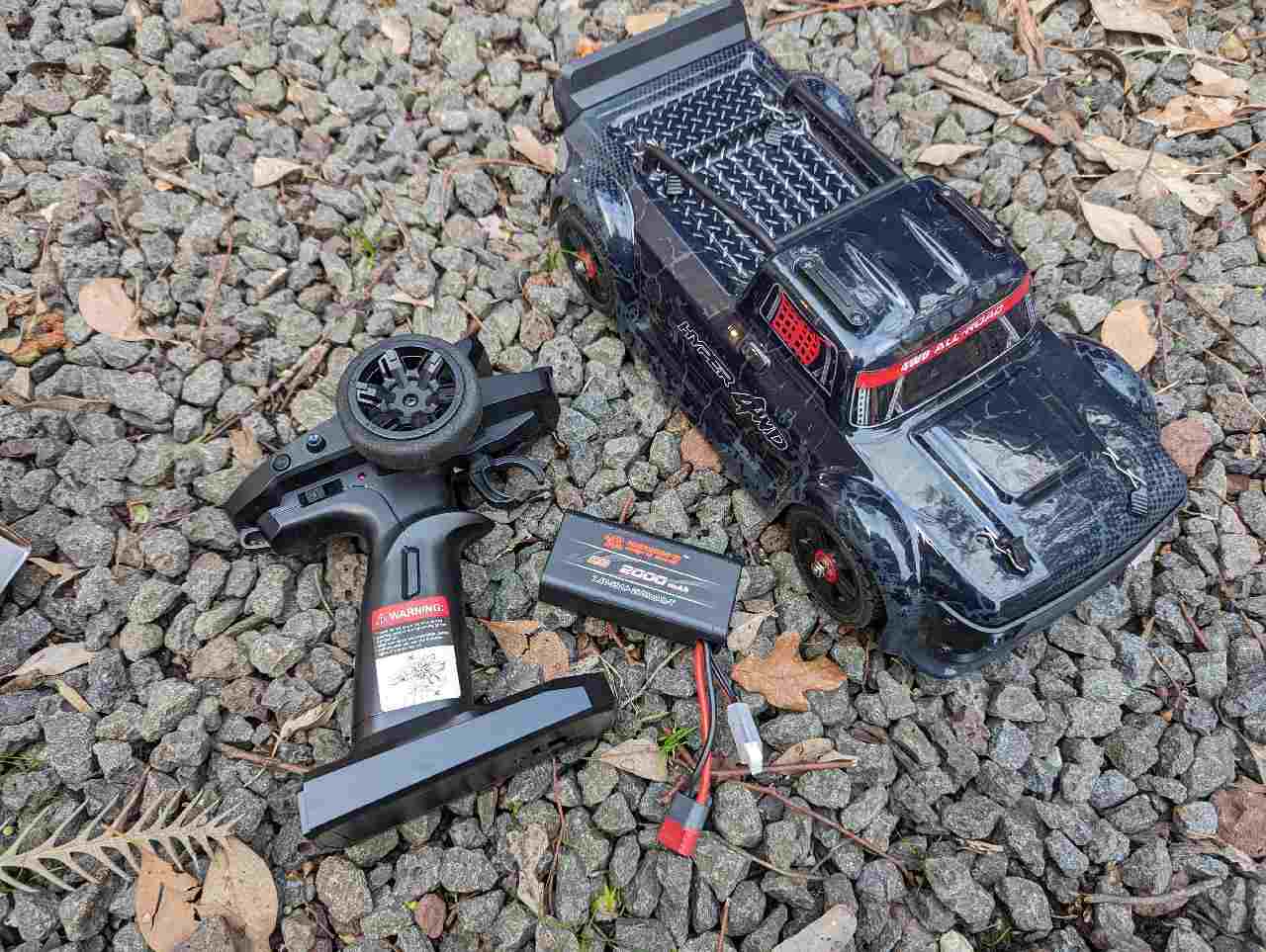
Vehicle Detail
The Hyper Go is a solid car, made to a price but without compromising on quality. It’s robust where it needs to be, and the tight body post holes ensure the body doesn’t rattle around during high-speed runs.
There’s an attractive frame stiffener that runs from shock tower to shock tower. The servo is a full-sized 17g unit. There’s minimal adjustment of the geometry but the turnbuckles to allow minimal toe adjustment up front. Spare parts are available here.
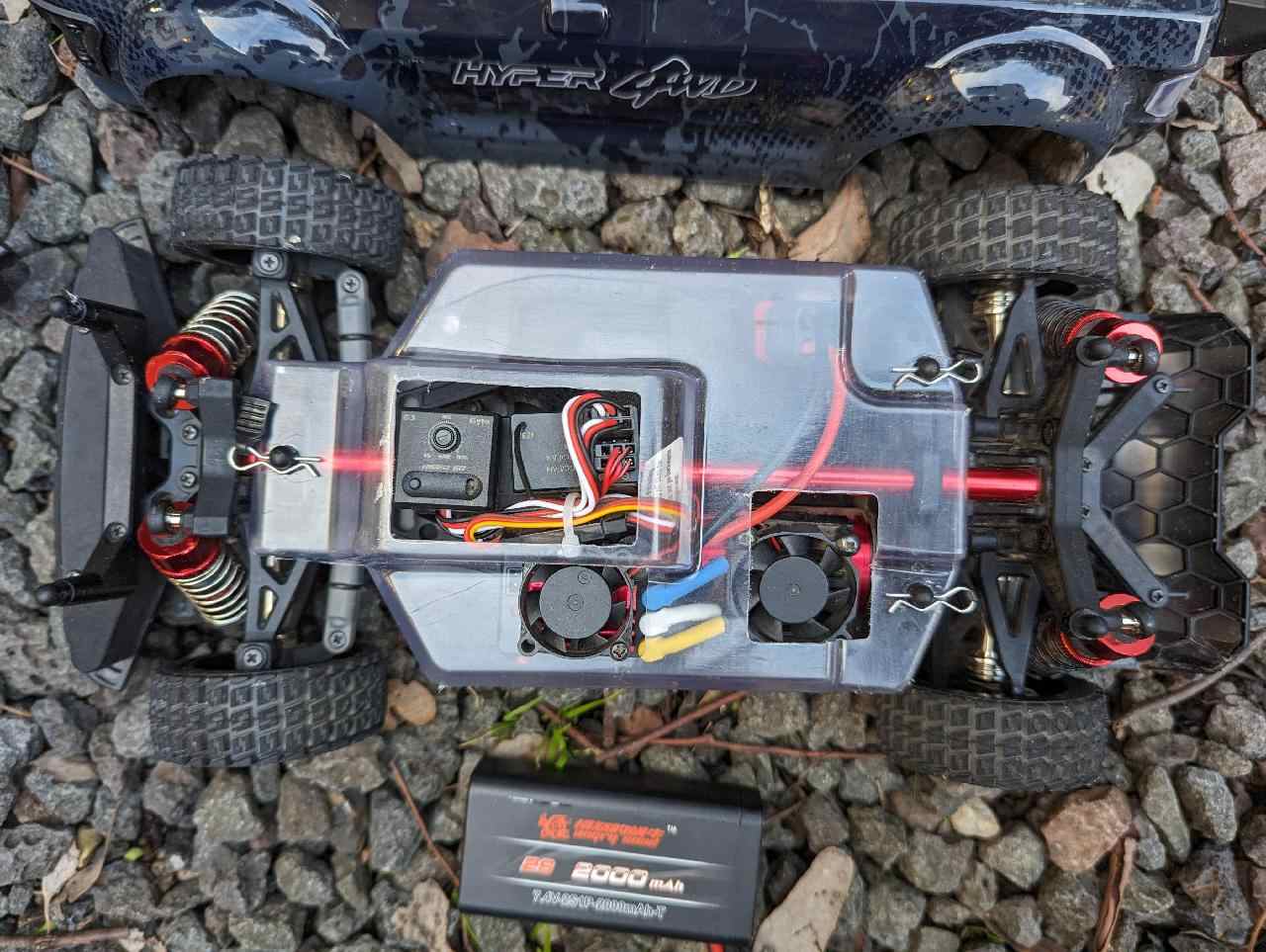
Drift Tires
The Hyper Go comes with a set of hard plastic drift tires. While they might not appeal to everyone, they do offer a unique driving experience, especially on a small, tight track. I wasn’t sure what I’d think of them but after running them on a 3S battery, oh boy – they are fun! I felt a bit silly at first, just spinning this thing and trying to drive as if on ice, but it grew on me and I keep wanting to drive it more now!
You’ll get bored of them eventually, but then you’ll be ready to try the Off-Road Tires for the next level up in drifting. Yeah, you heard me right – read on!
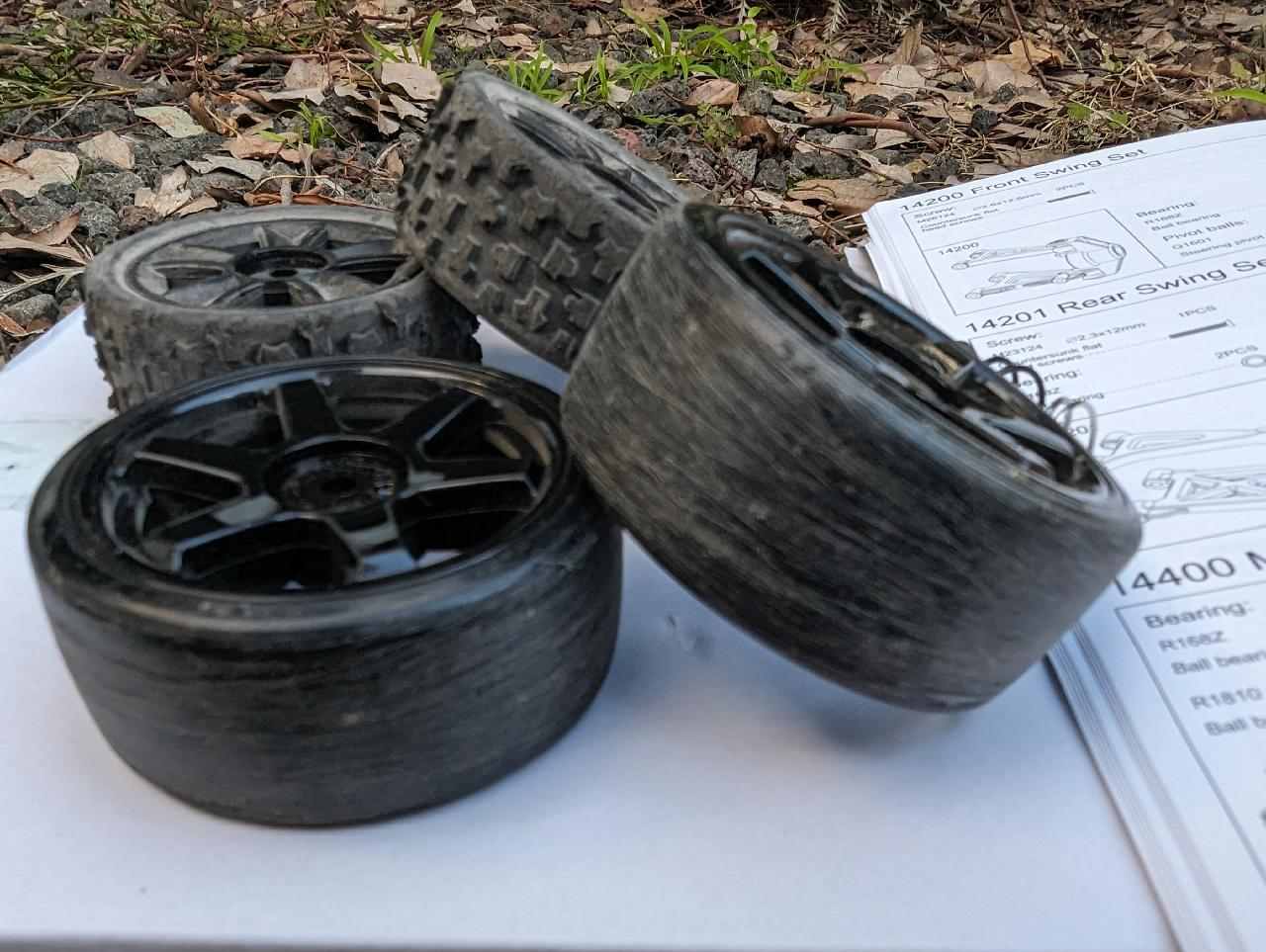
Off-Road Tires
The off-road tires that come with the Hyper Go are fairly stiff. The rubber is firm and the lugs are widely spaced. While you can run this car on small gravel and short grass, it really isn’t meant for such treatment.
Where the off-road tires shine for the MJX Hyper Go is on asphalt. Yes! They’re surprisingly good at drifting! They wear fast on asphalt, but their large lugs provide just the right balance of reduced grip and forward traction for an exhilarating drift drive. Who knew!?
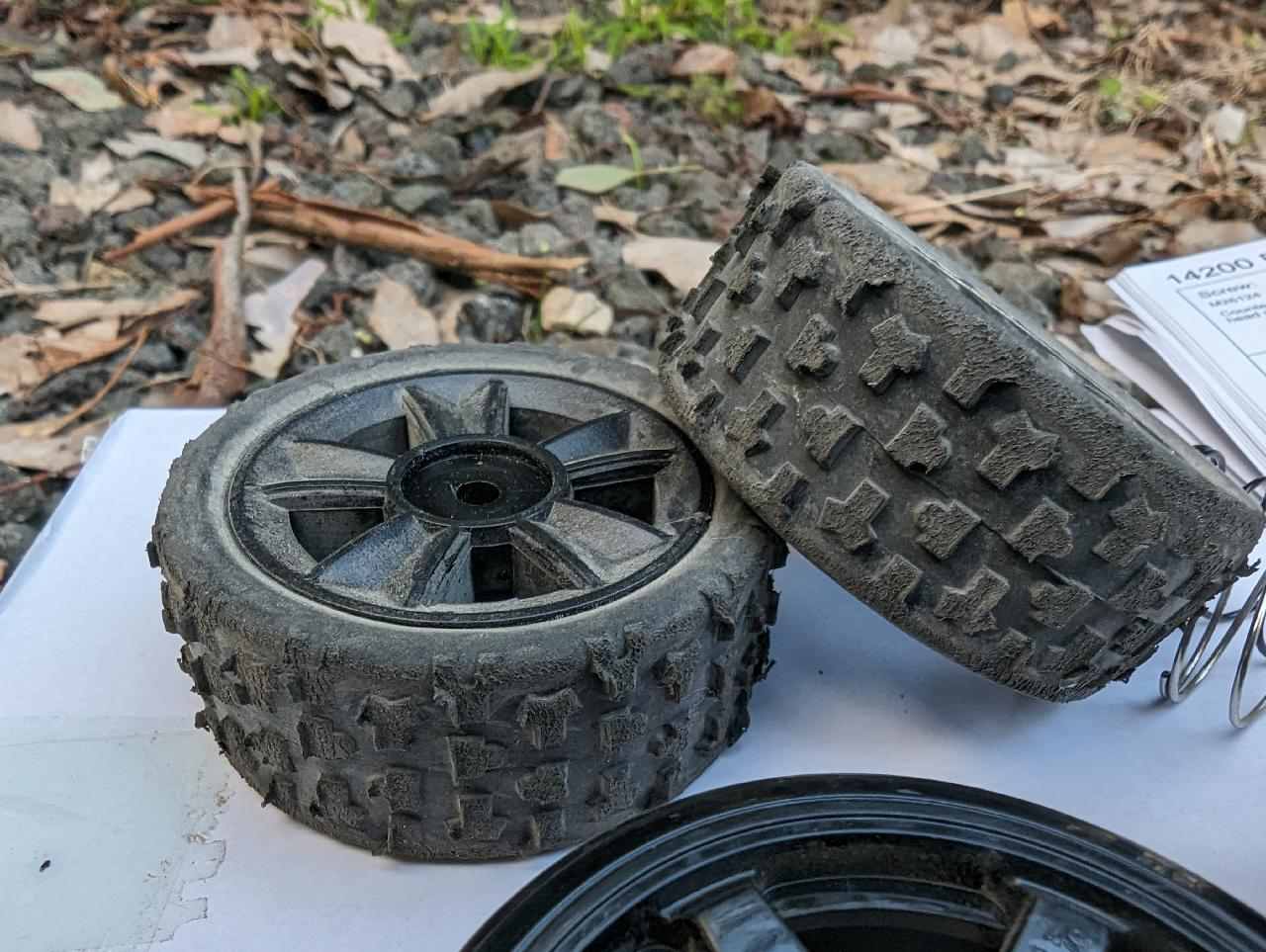
Road Tires
For me, these are the important ones to get right. Drifting is fun and you should be able to do it to a limited amount even with the normal road tires, but I want to see grip, good braking and acceleration and overall good handling characteristics. The lugs on these tires are still quite large, for road tires, so they’ll have their work cut out for them. How did they go?
Well, the road tires that come with the MJX Hyper Go are fairly aggressive, providing good grip on the road. Better than I expected. When combined with the stiffer rear springs and a little pre-load to help keep the front from lifting so much, they make for a fun driving experience. Acceleration is tight and if you’re careful with your turns, they’ll deliver a rewarding drive.
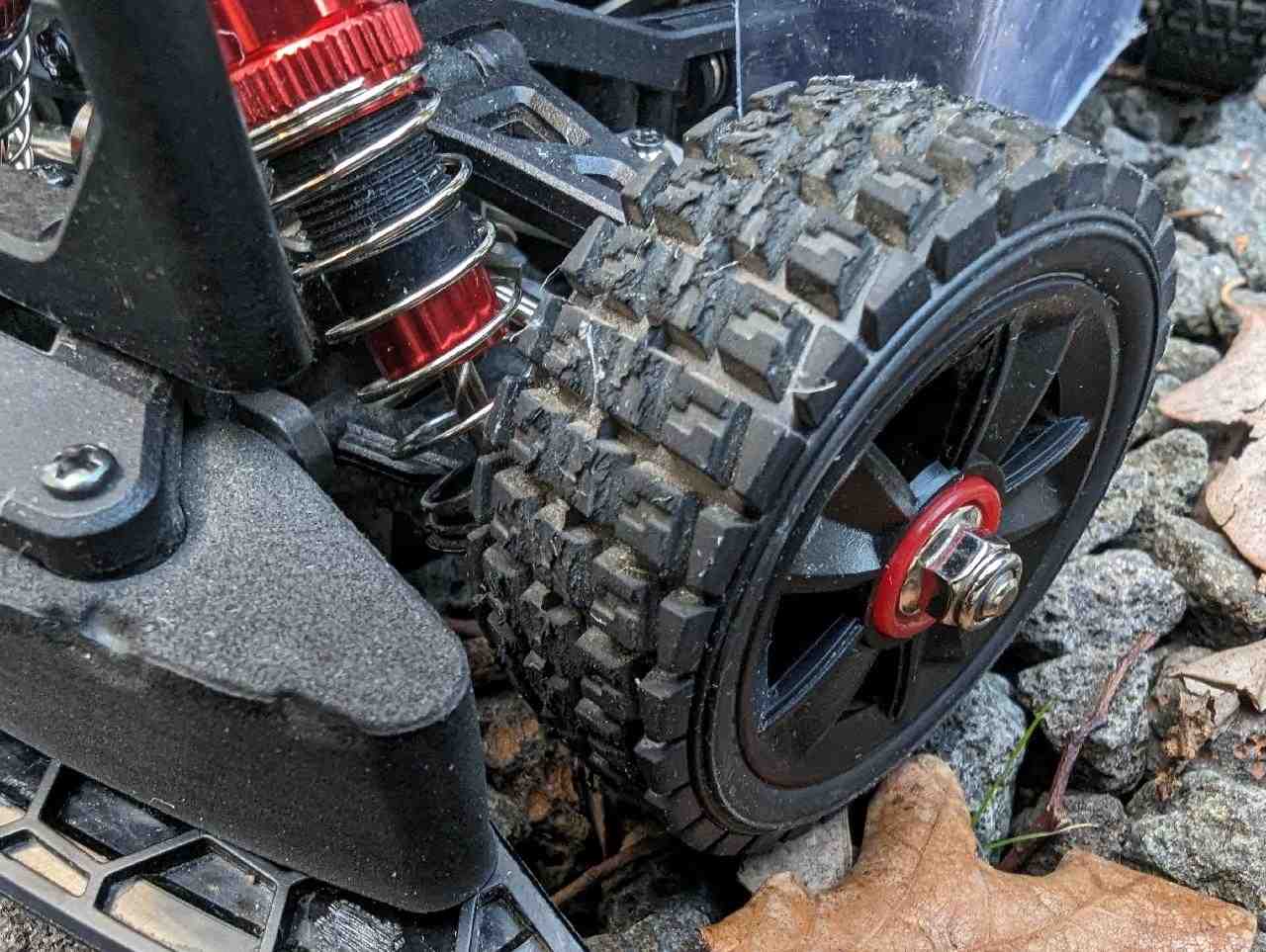
Problems & Fixes
One issue with the Hyper Go is the slight delay on the throttle from the radio transmitter. You can live with it and after a little while it isn’t noticeable, especially for just bashing. However, it may irk some drivers. You can address this by replacing the radio system with a better one – not ideal, but at least it’s doable. The separate components of the car (receiver, ESC, gyro) allows for such an upgrade without needing to change any other parts of the car, so it’s good to at least have that option.
The other issue I had with the car was the inside front wheel lifting on turns, even with the above mentioned tuning already done. Sway bars could be helpful here, but otherwise the only thing I have yet to try is thicker oil in the rear shocks and perhaps a travel-limiting damper in the rears to limit compression by half or so. I want to keep that front pushed down as much as possible. The car is already fairly hefty and nicely balanced, so achieving that limited rear squat might be a viable way forward. I’ll keep testing and will update this section if I find a better answer.
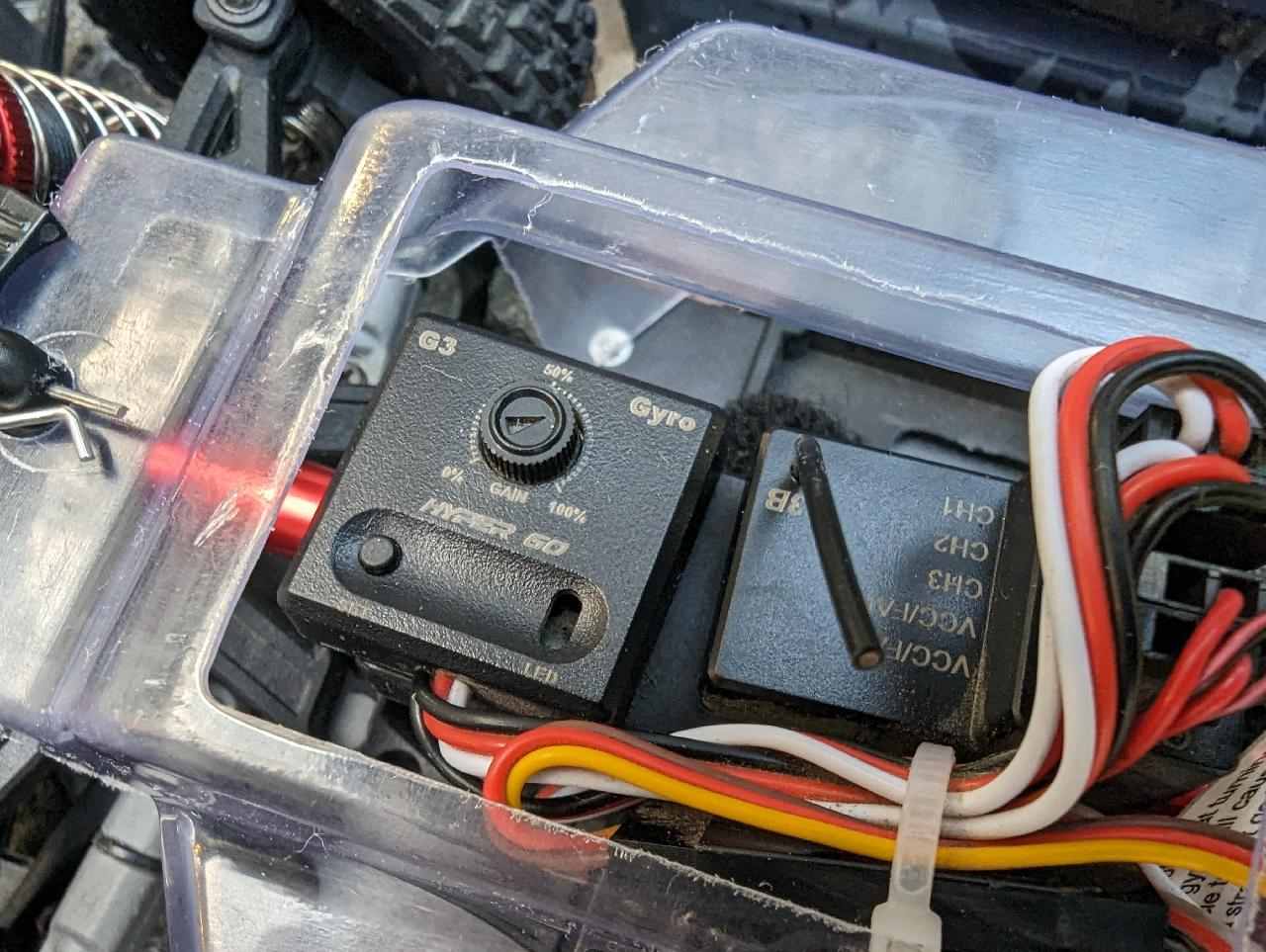
Final Thoughts
Should you buy this thing? My affiliate link says yes, but my cautionary advice says to first consider what kind of driving you like. If accurate cornering and track-like handling is more your thing, consider the Rlaarlo AK-917 (article here). However, if hooning and big skids and silly fast speed in a tiny package are appealing to you, then yes, the MJX Hyper Go will certainly deliver all of that!
The MJX RC Hyper Go 1/14 Brushless RC Car is a solid, fun-to-drive RC car that offers good value for money. Its robust construction, versatile features, and thrilling performance make it a great choice for both beginners and experienced RC car enthusiasts. While it does have a few minor issues, they are (mostly) easily fixable and do not detract from the overall driving experience.
If you’re interested in purchasing the MJX RC Hyper Go, you can find it here. Please note that this is an affiliate link, and I appreciate your support of RC-TNT if you choose to use this link to buy. Happy hooning!
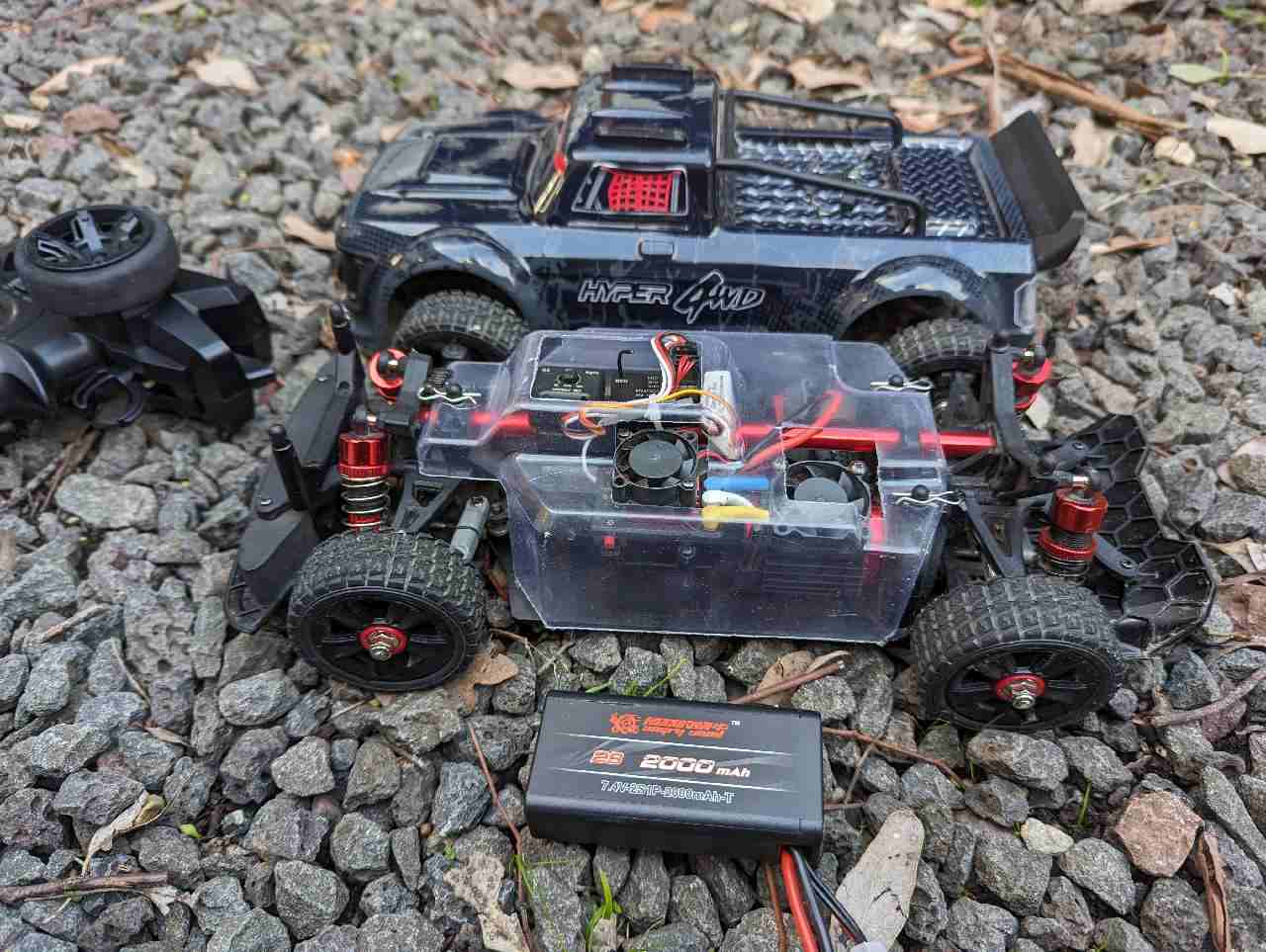

Craig Veness
RC-TNT
Craig has been into radio control since the 90s and into RC crawling since about 2010, when a Losi MRC started the obsession! Now it's all rocks this and crawl that and upgrade all the things! ...You know how it is, right? Welcome home 🙂
A note on affiliate links: we were provided with this car by the manufacturer for review purposes. The Amazon and AsiaTees links in the above article are affiliate links, which means we may be paid a small commission if you choose to click on them to make a purchase. As always, we make effort to ensure that no review is impacted by this – we still report on bugs and issues encountered during product testing, and our fixes or solutions if found. Thank you for reading and happy RC-ing!

